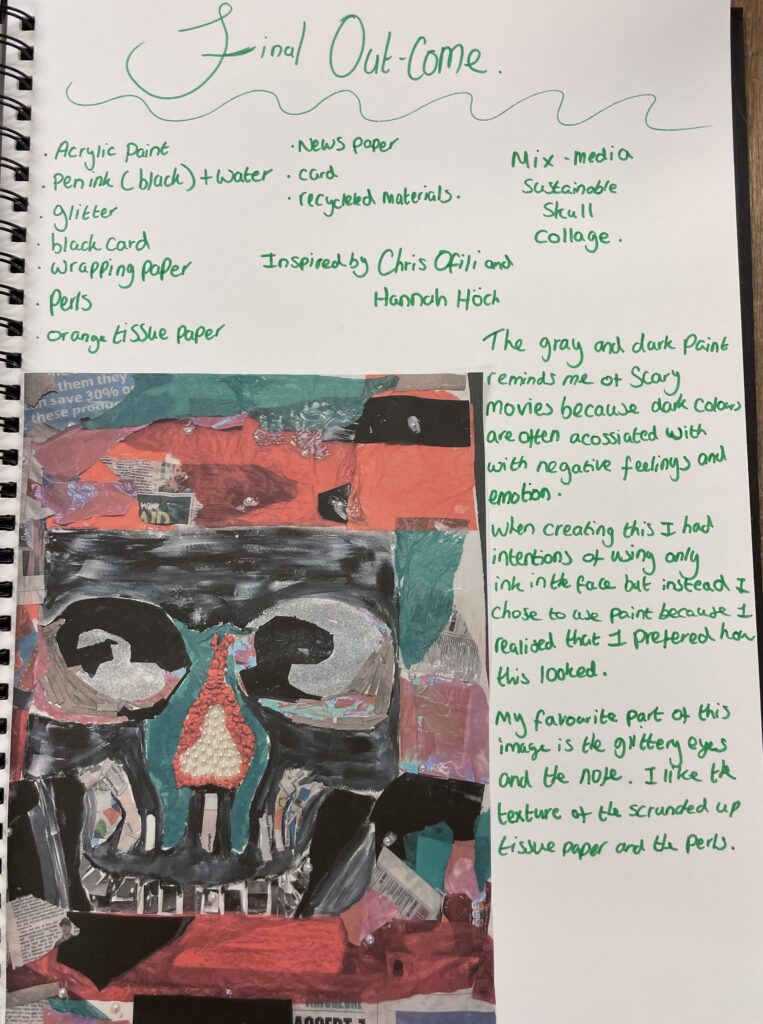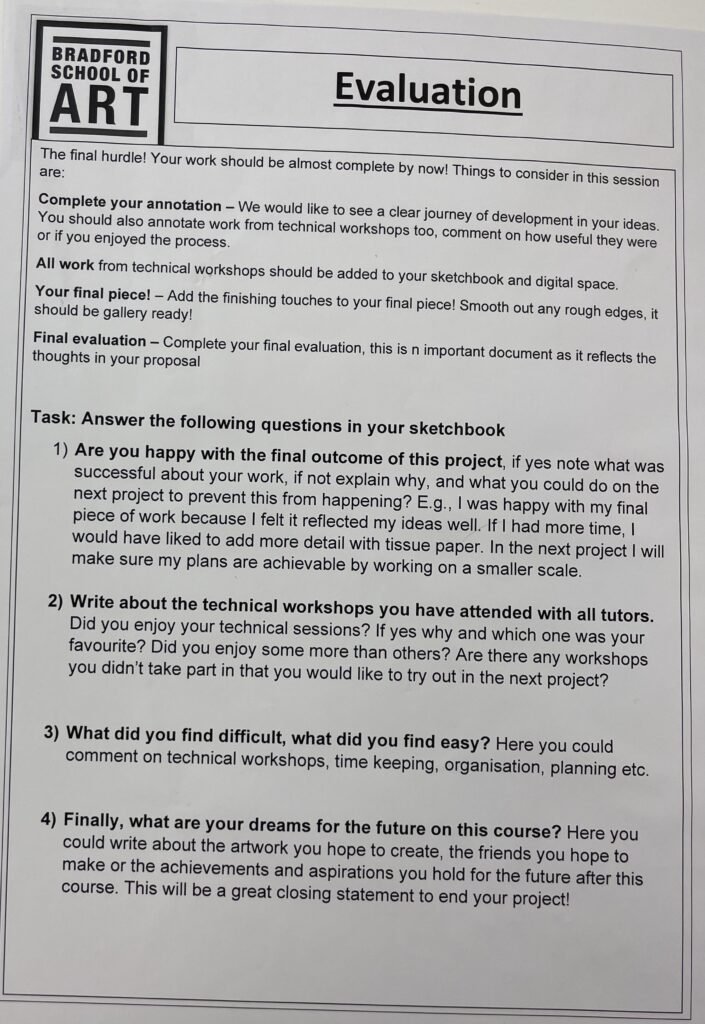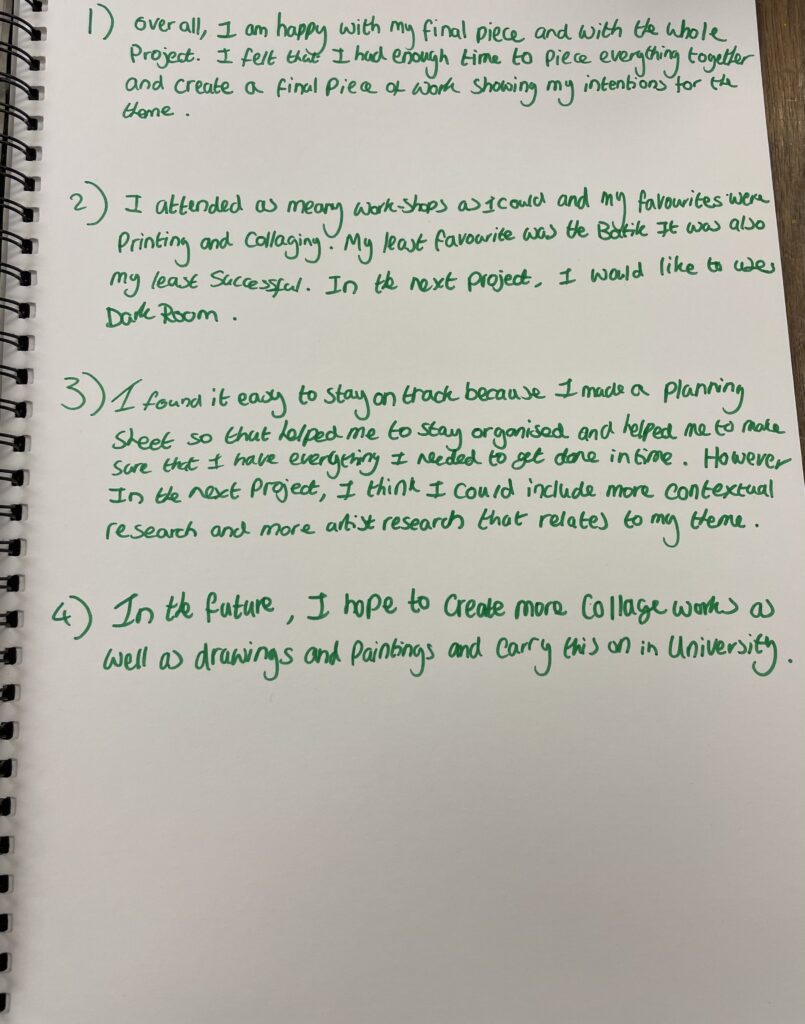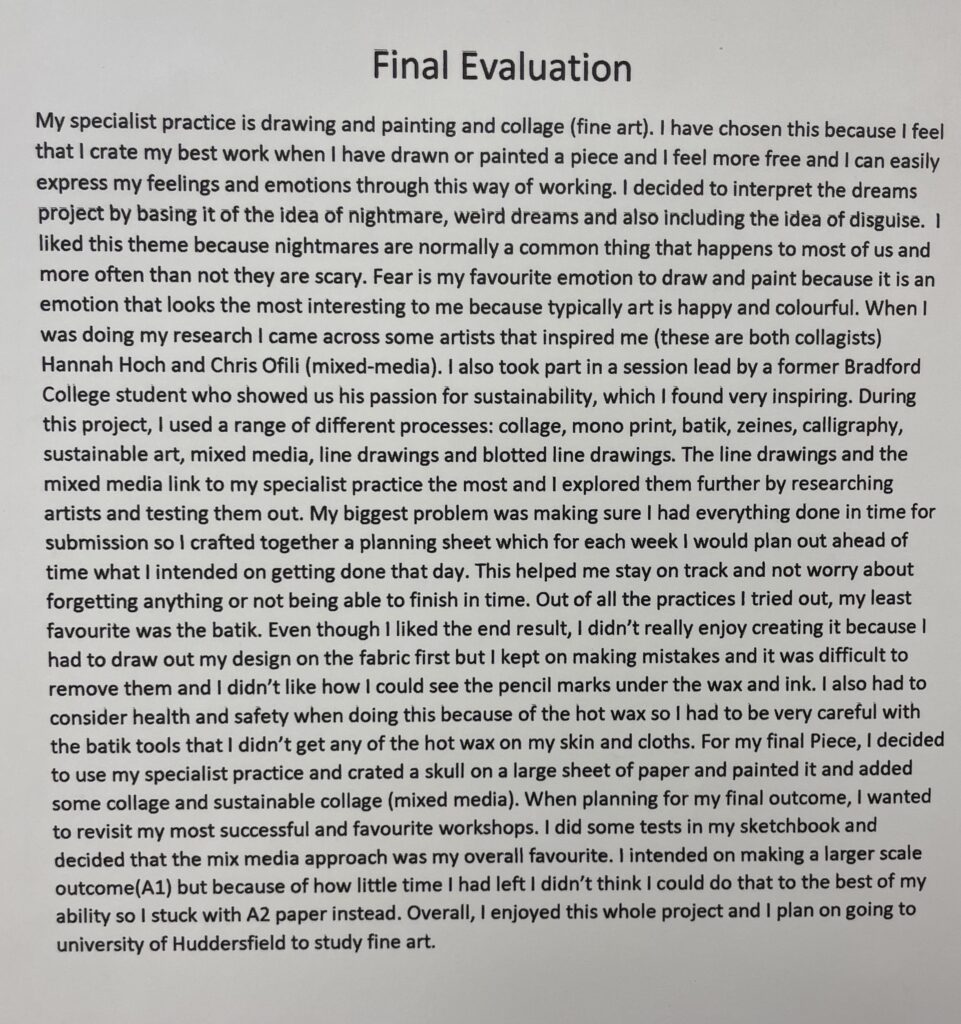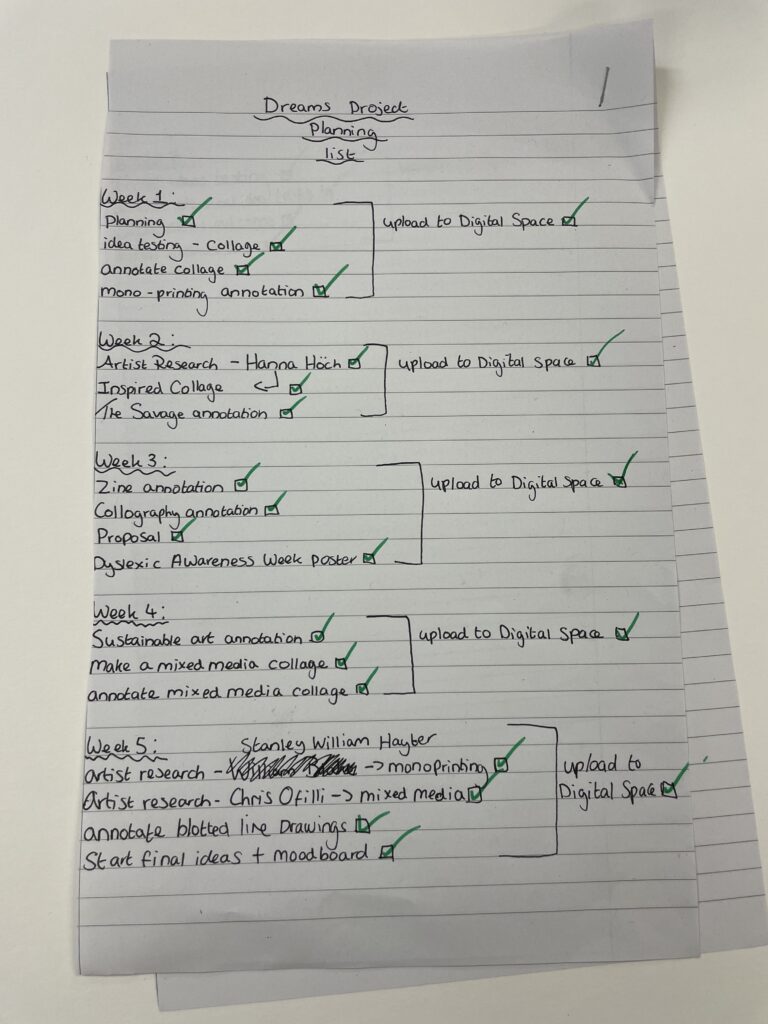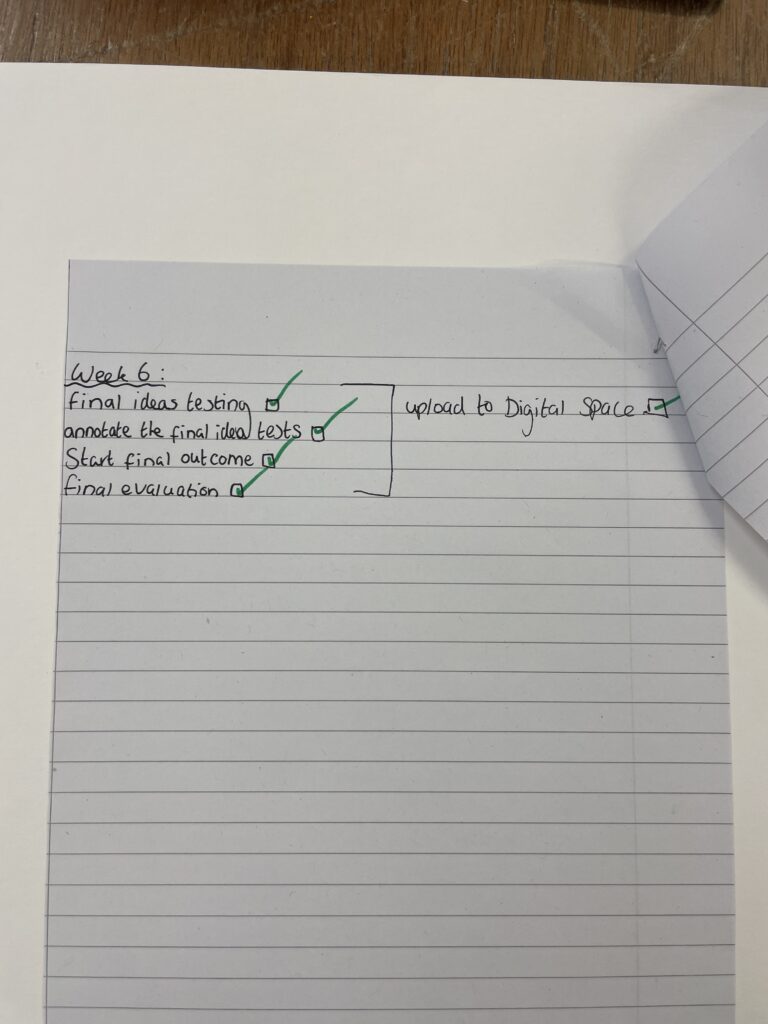Summer work
Past present and future postcards
Future
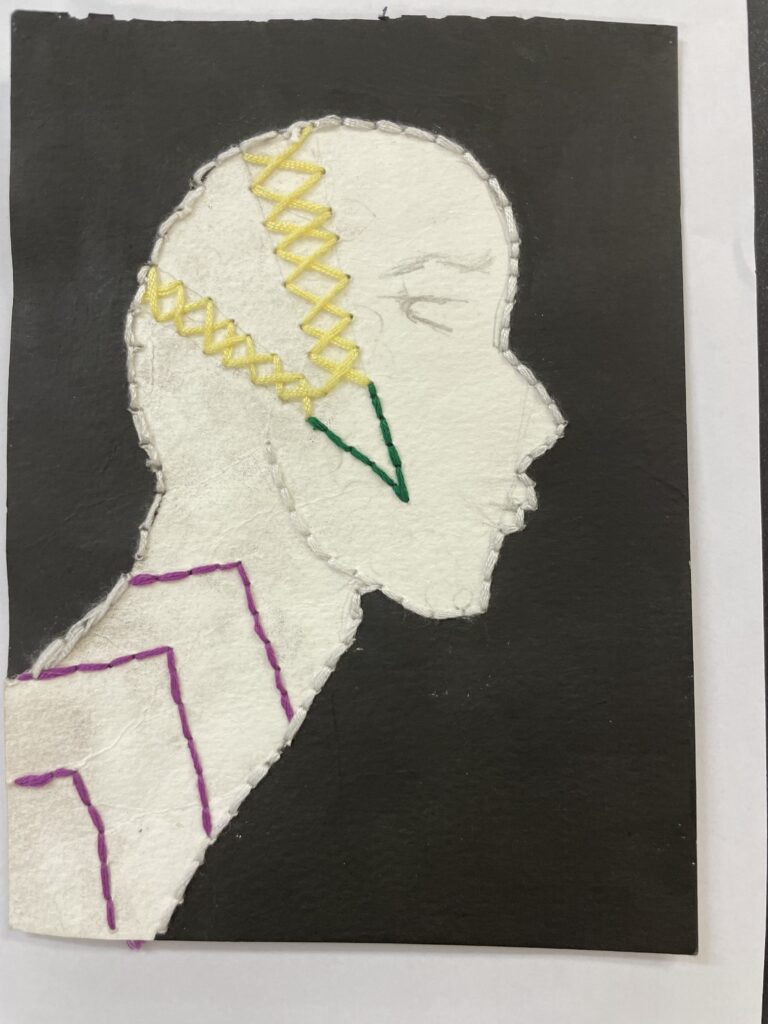
Present
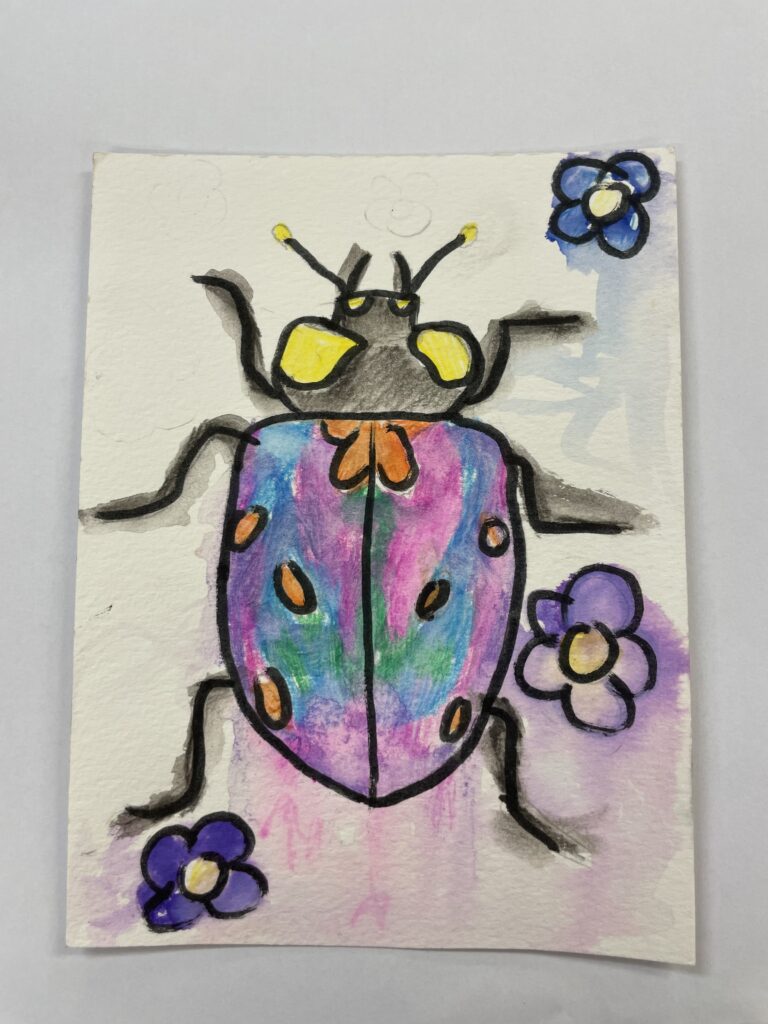
Past
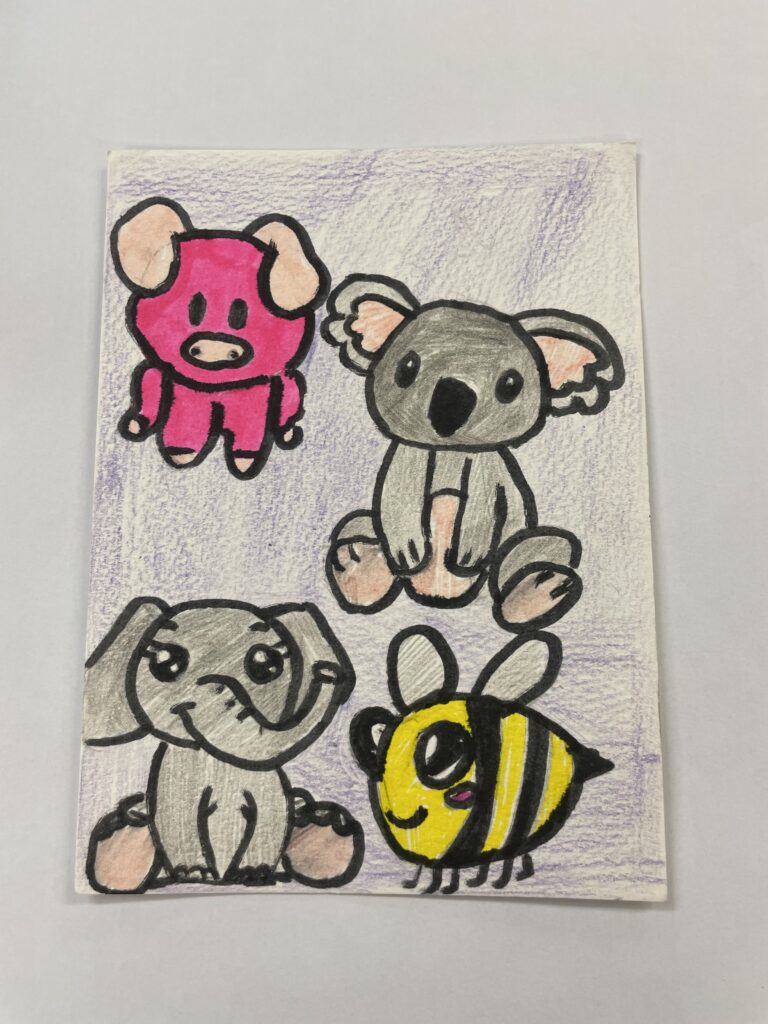
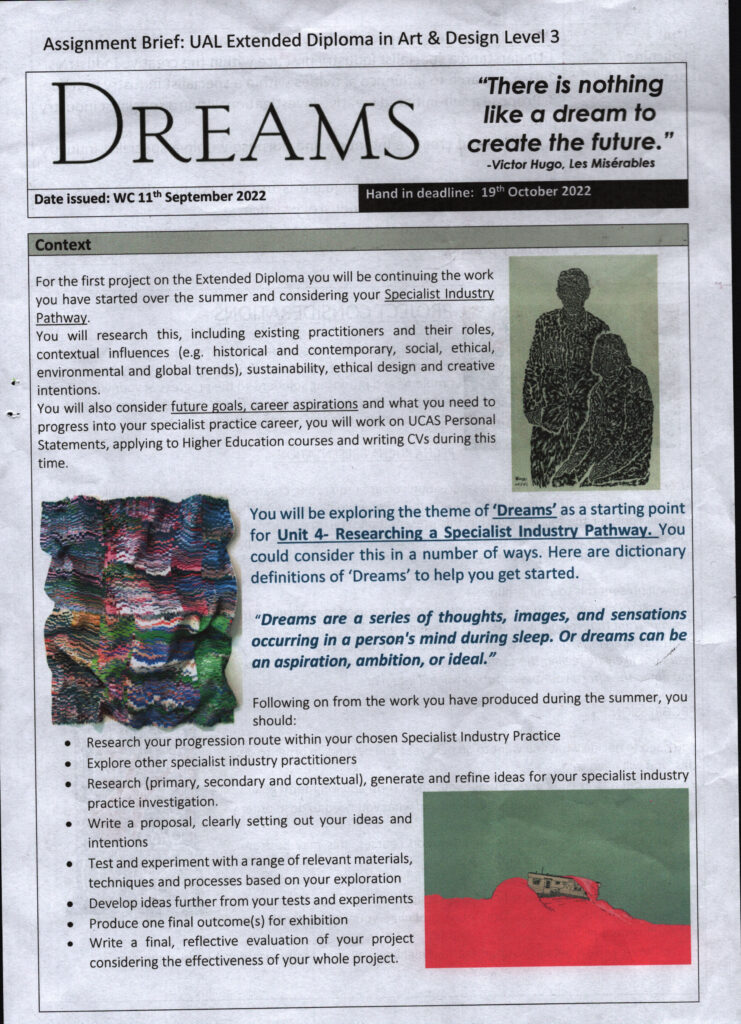
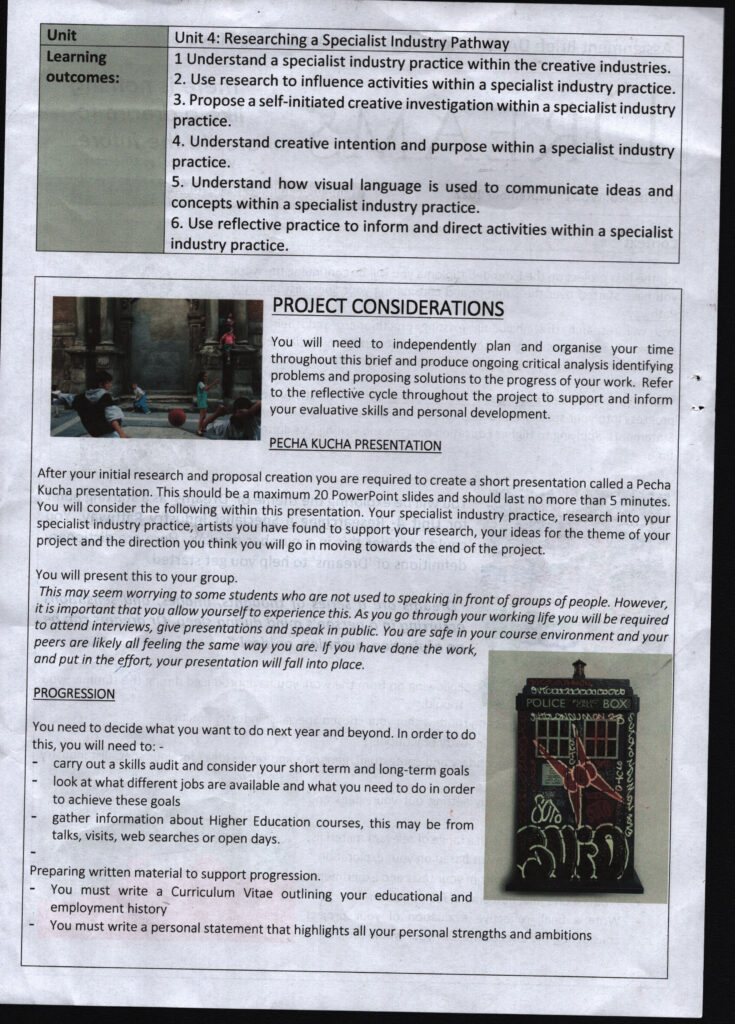
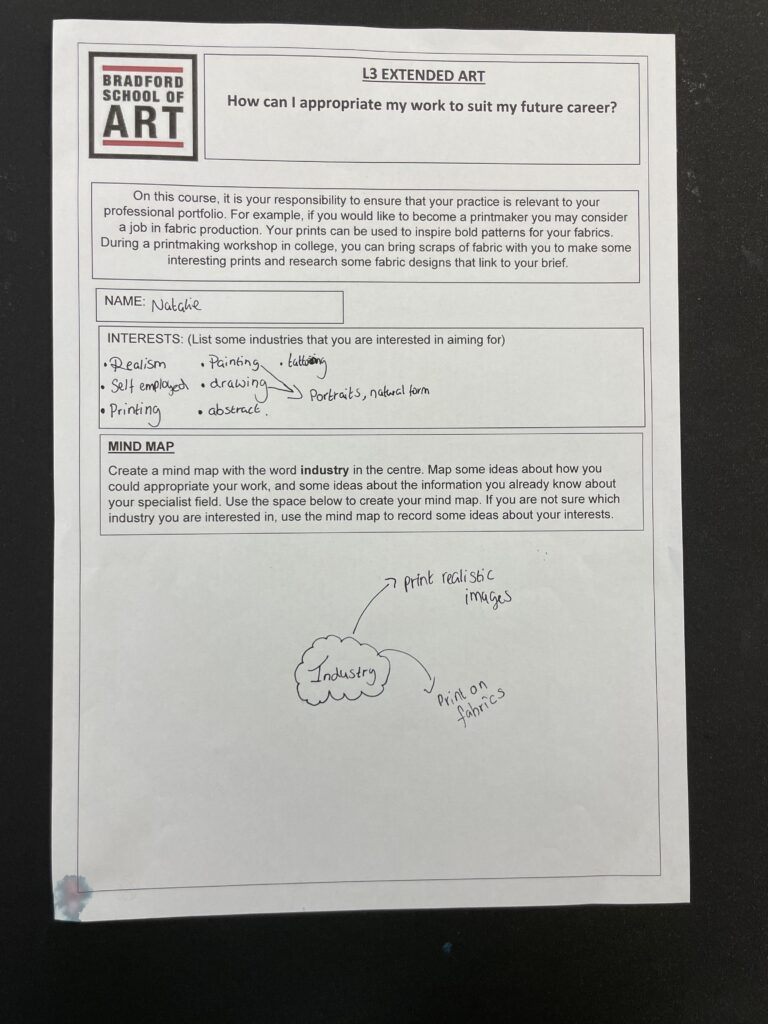
As part of my planning I made an ideas mind map of words I think of when I hear the word dreams. I also took some ideas from the group discussion we had.
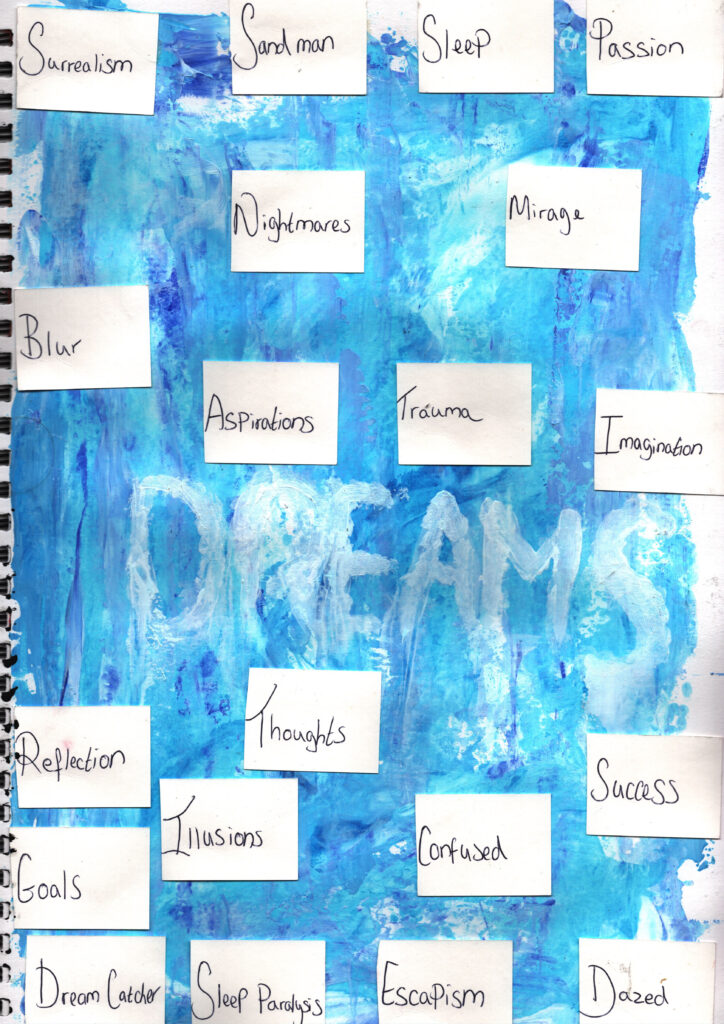
After that I decided I wanted to focus this project on nightmares and I did a little bit of research into it and I liked the idea of disguise and how dreams can be strange and that they sometimes don’t make any sense, which could give a creepy feel to my project. So I wanted to base my project on demonic weird disguise which I find to be quite interesting and thrilling. So as part of my planning I created another creative mind map of listing words that I think of when I see the words creepy , strange and disguise.
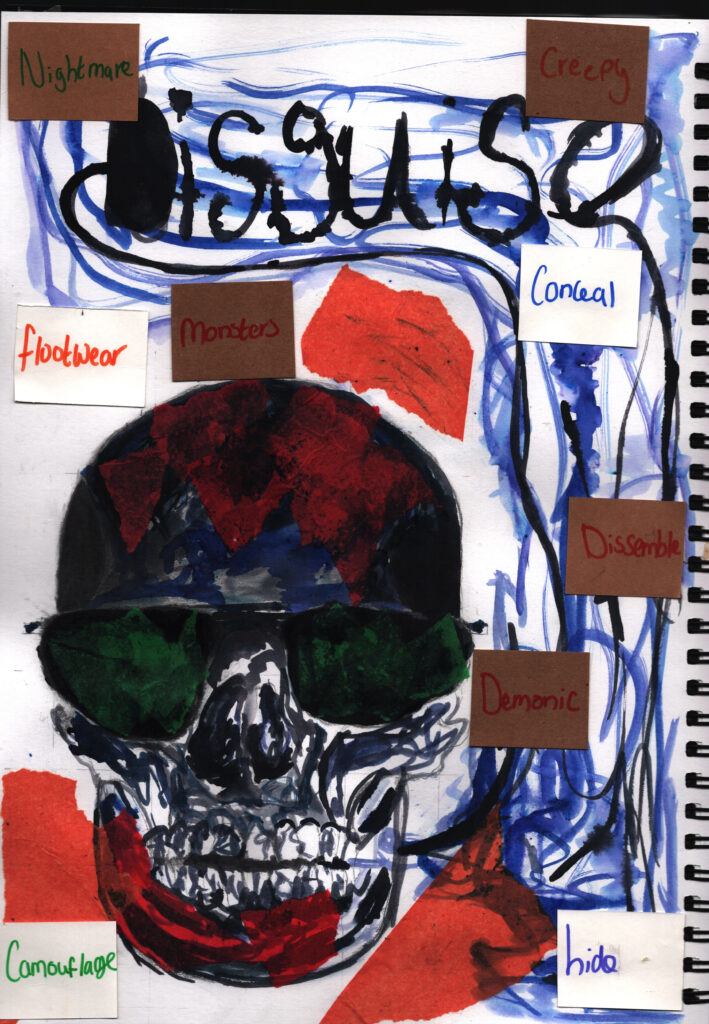
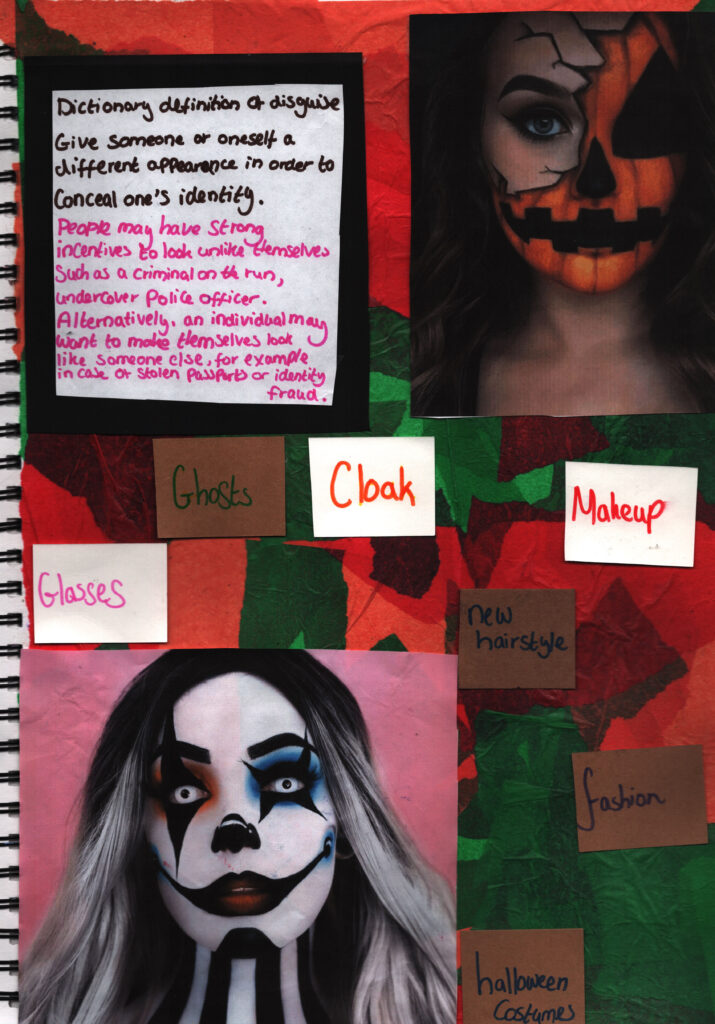
Research links( secondary)
https://www.google.co.uk/search?q=associated+with+halloween&ie=UTF-8&oe=UTF-8&hl=en-gb&client=safari
https://www.google.co.uk/search?q=meaning+of+disguise&ie=UTF-8&oe=UTF-8&hl=en-gb&client=safari
Collage
Next I did some idea experiments and I tested out collage. I found this to be quite successful and simple to do and quite relaxing.
Secondary Research
Japanese artists began to stick paper onto silk as early as the 11OO. In Europe, paper collage is the first recorded in Europe in the 1400. By the following century , the technique was being put to practical use in anatomical “flap-books”, woodcut prints, layering skin and sinew over internal organs. In the Victorian period, collage in the form of scrapbooks and home made Valentines day cards became immensely popular pastime . Charls Dickens and the actor William Macready , created a huge scrap-work folding screen , with 400 engravings collaged on both sides. Early photographers developed a practice of splicing images together , allowing them to meddle with temporality and dissolve the boundaries between the natural and supernatural – a theme that the surrealists would explore.
Collage Research link
https://www.economist.com/1843/2019/07/24/stick-em-up-a-surprising-history-of-collage#
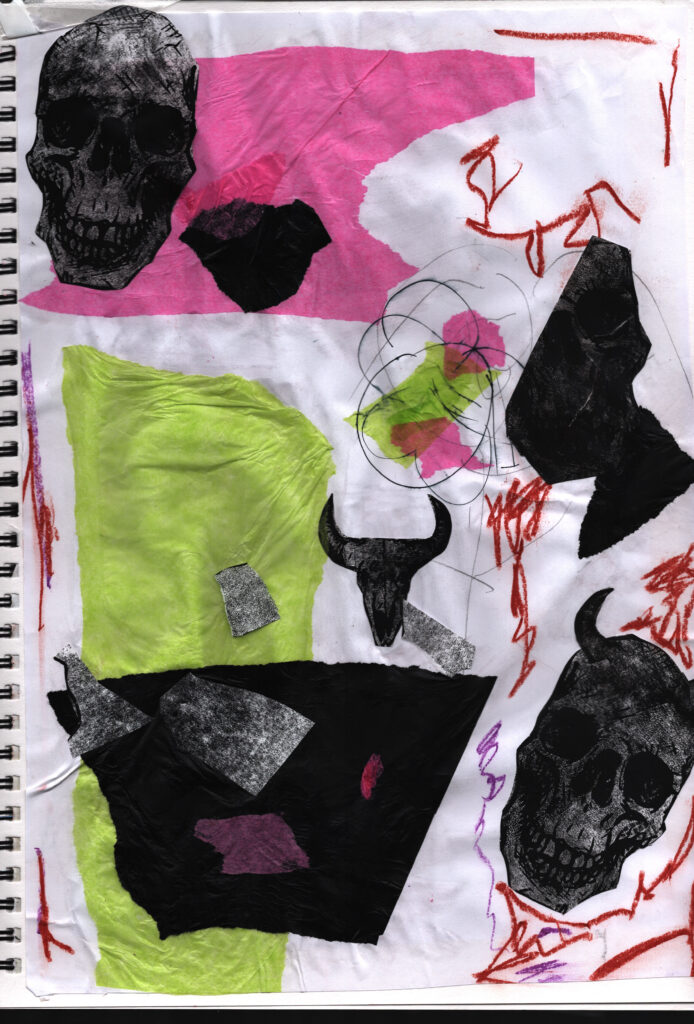
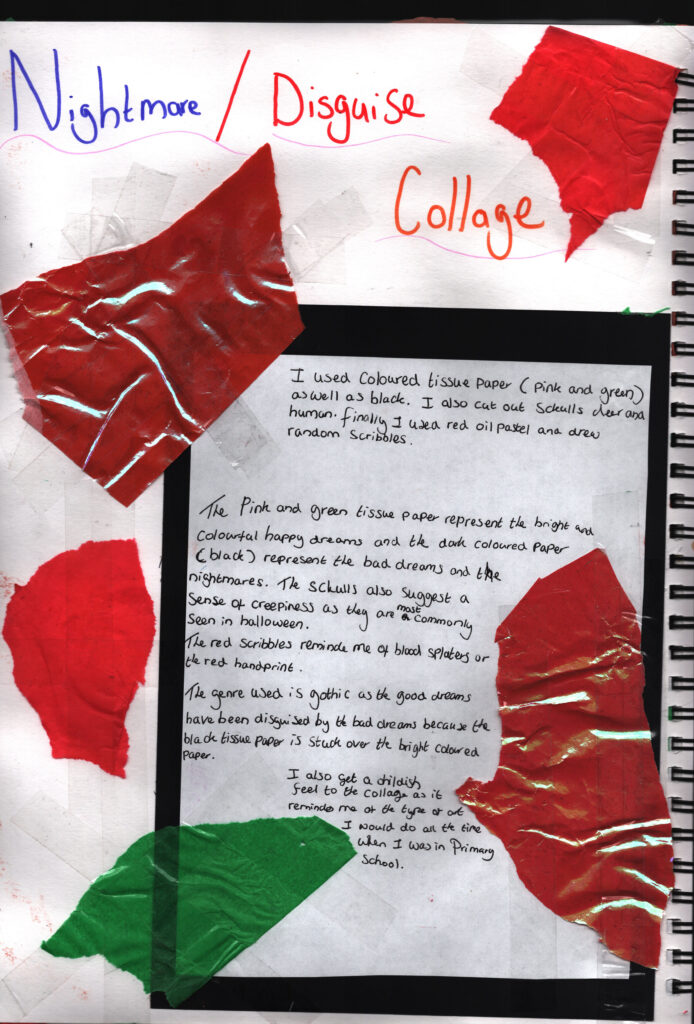
Mono printing
I also experimented with mono printing and testing out different ways of printing ghost prints and I also tried using mark making techniques .
How I made the Mono Prints:
step1: First, I covered a gel plate with ink using a roller.
step2: Next , I covered the inked gel plate with a sheet of paper.
step3: Then, I pressed my hand on top of the paper I also used a pen lid to create the texture and mark making lines by rubbing it on the paper on top of the gel plate.
step 4: Finally, I pealed of the paper the reveal the designs.
To create the ghost prints I used the same technique just using less ink to get the ghostly effects.
Secondary Research
I also found some research about print in a book called “What Is Print? “selections from the museum of art”. From the college library.
A print is a work of art that is made by transferring an image from an inked surface to a sheet of paper and that exists as one multiple impression, which together continues an edition. print making is a vast field that offers a full palette of artistic opportunities ; it is age-old practice that continues with unrelenting vigor in the twenty-first century, hewing close to tradition while always exploring its boundaries. The impulse behind print making – the desire to leave imprint-can be traced back to hand prints made on walls of caves in the Paleolithic Era. Today, print making consists of primarily of four families of techniques: relief processes, which includes wood cut and linoleum cut; intaglio mediums like engraving , etching and planographic forms such as lithography, and stencil processes, most notably screen print. The techniques each have their own history – having migrated from religious , craft, or commercial uses to artistic ones-and provided a means of producing an image in multiple copies before the advert of photography. While printing is still most commonly done on paper, it can also be done on felt, wallpaper, concreate , and many other surfaces.
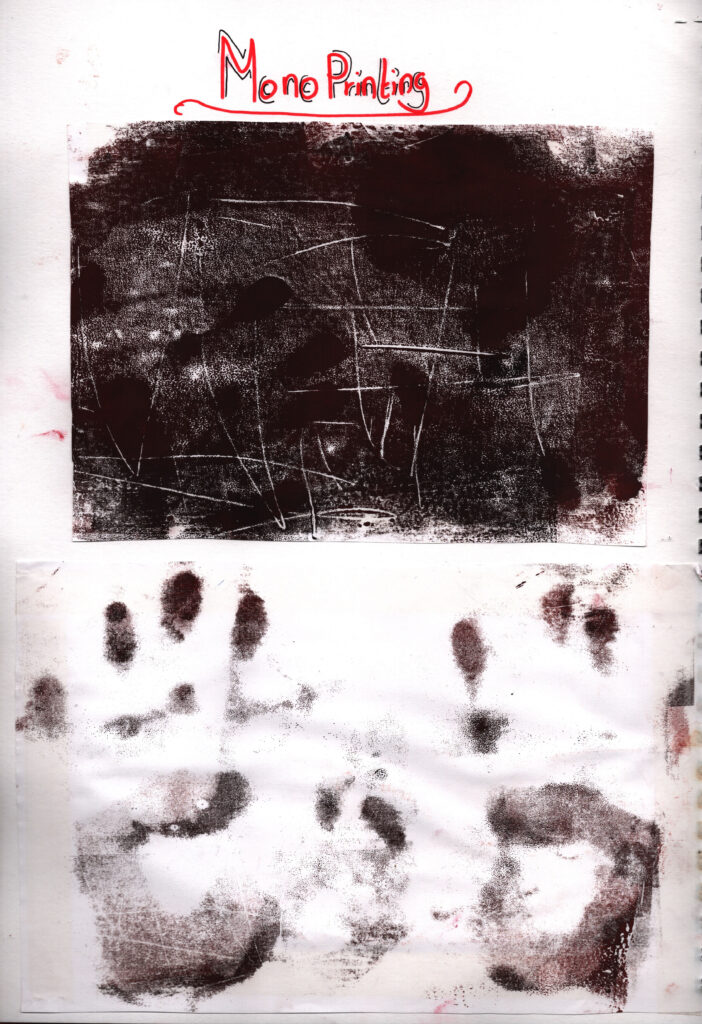
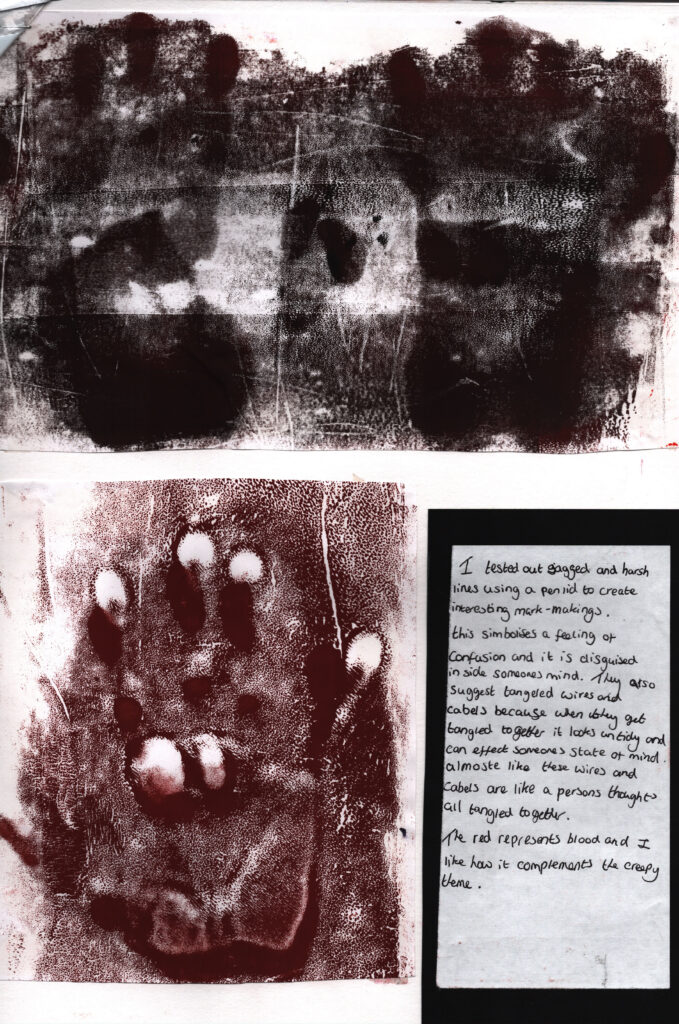
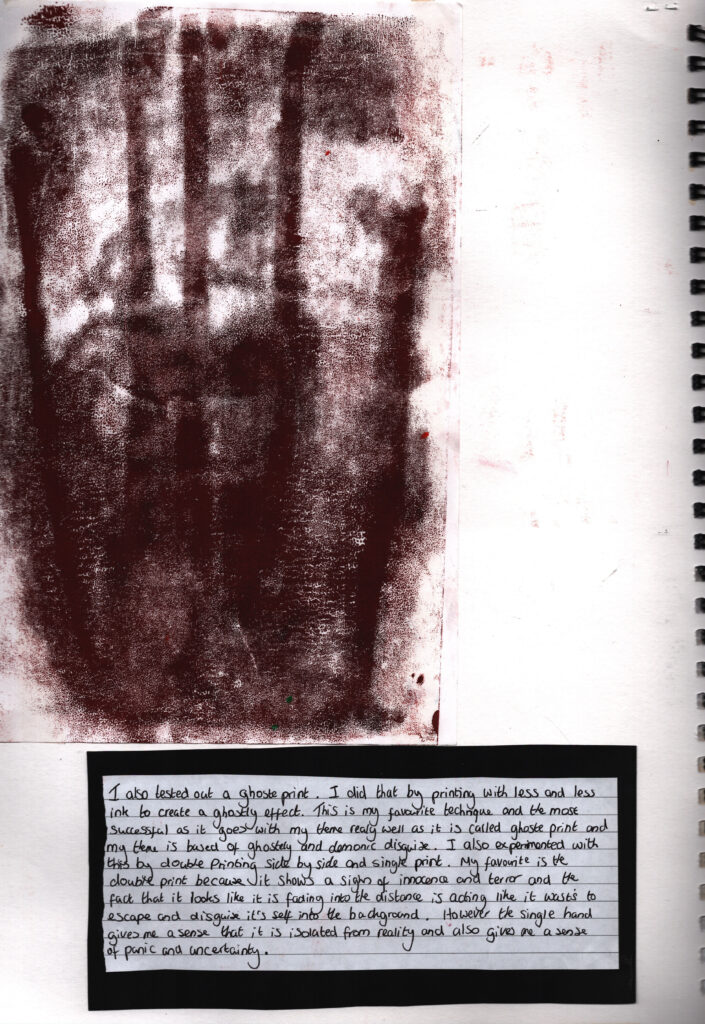
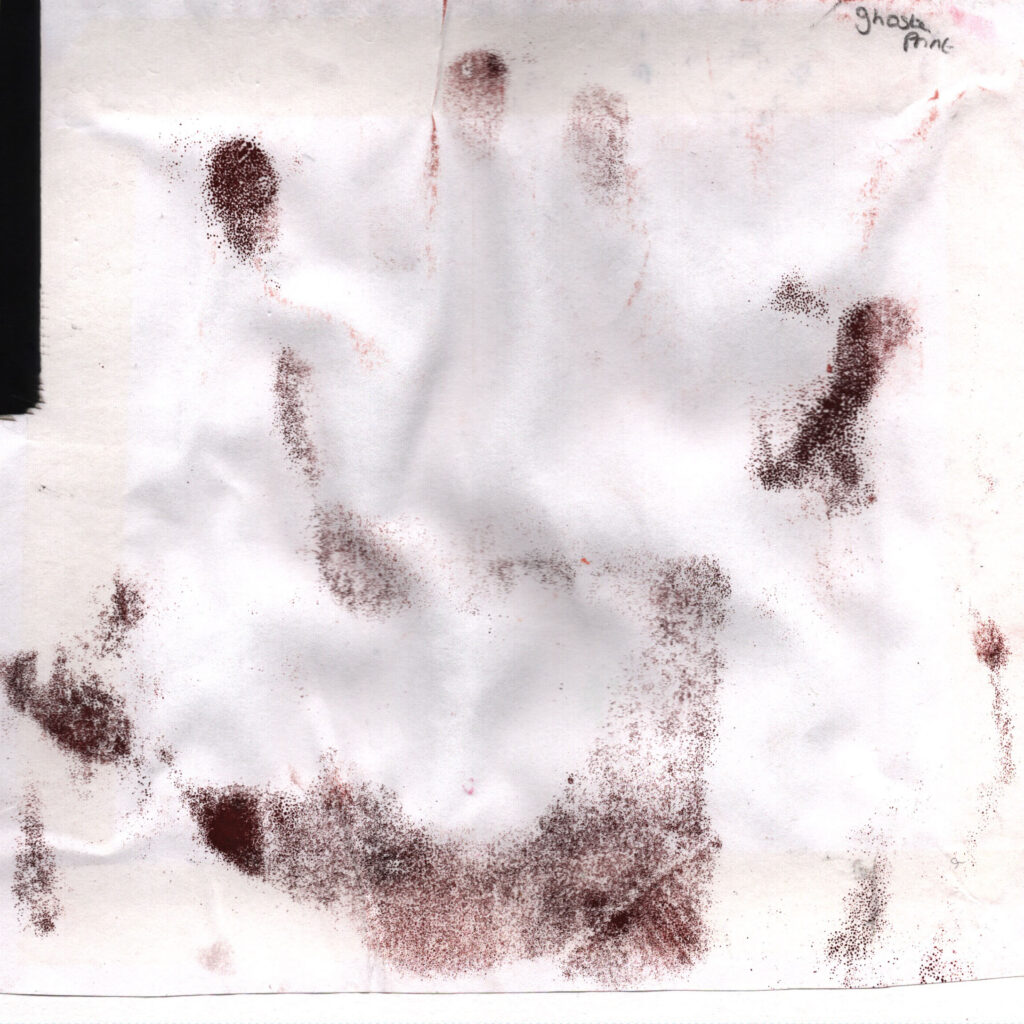
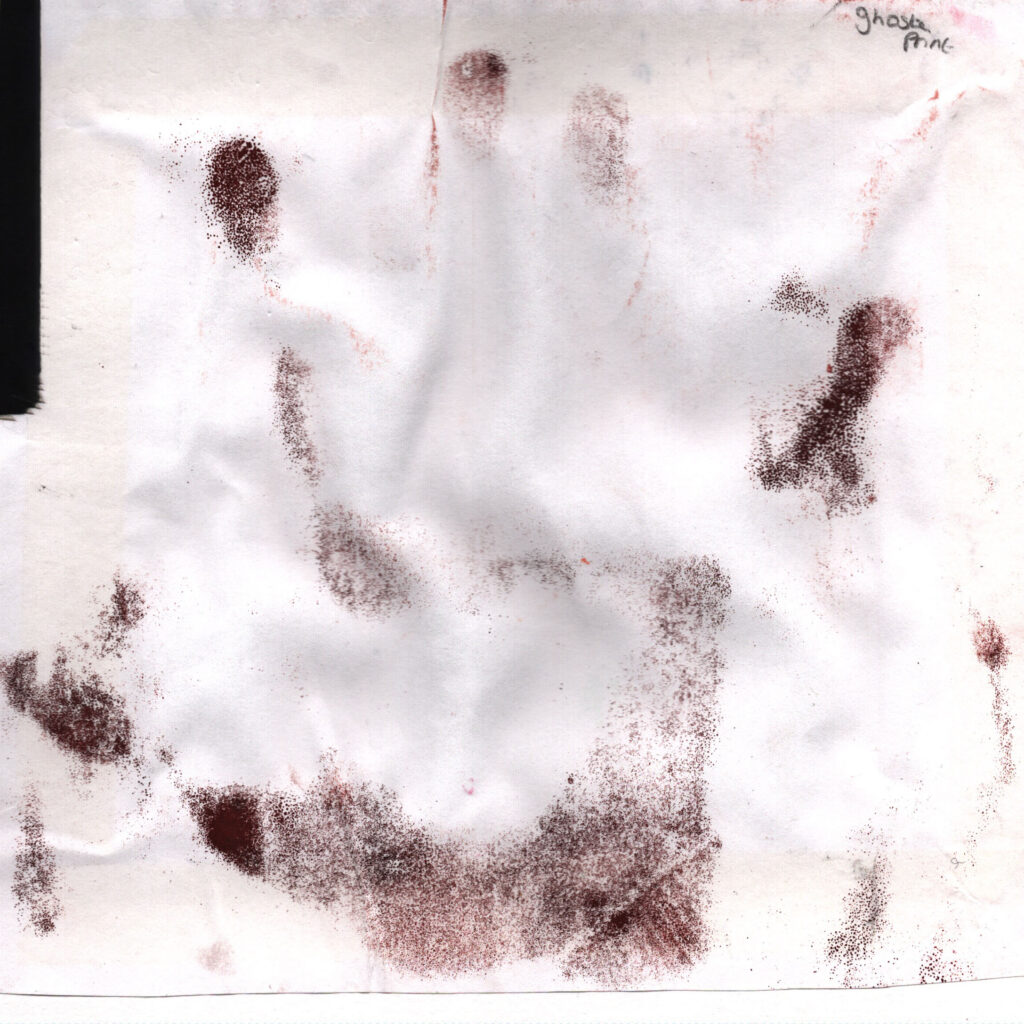
My least successful prints are the ones that are heavily inked and most pigmented. This is because they don’t look very ghost like and they look over done and over exaggerated. Although, I do like how I can clearly see the shape of my hand print. I also don’t like the print which I tried dragging my hand down the paper. This is because the shape of my hand is lost and it looks like I have carelessly covered the sheet in red thick ink.
If I try this again I will focus more on the ghost print approach as it fits in to my theme the best and overall it was the most successful method.
Artist research: Hannah Hoch
To follow up on the collage work I did I decided to research an artist called Hannah Hoch which I can see does collaged art. I also created an inspired piece that is inspired by her style of collaging but also relates to my theme.
Research links:
https://www.moma.org/artists/2675
https://www.google.co.uk/search?q=hannah+hoch&ie=UTF-8&oe=UTF-8&hl=en-gb&client=safari
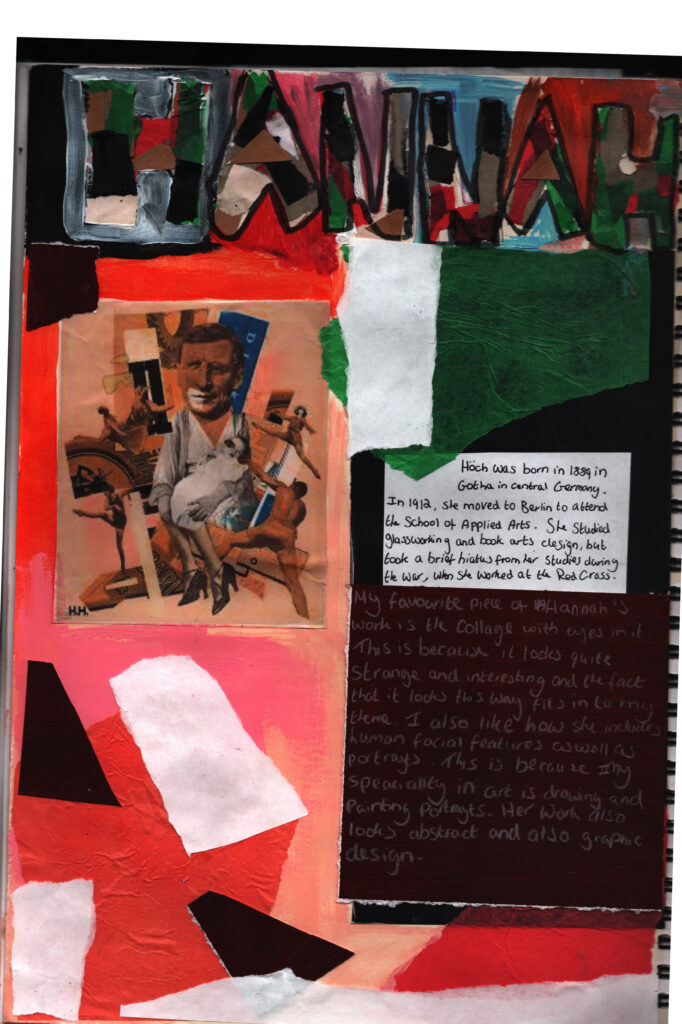
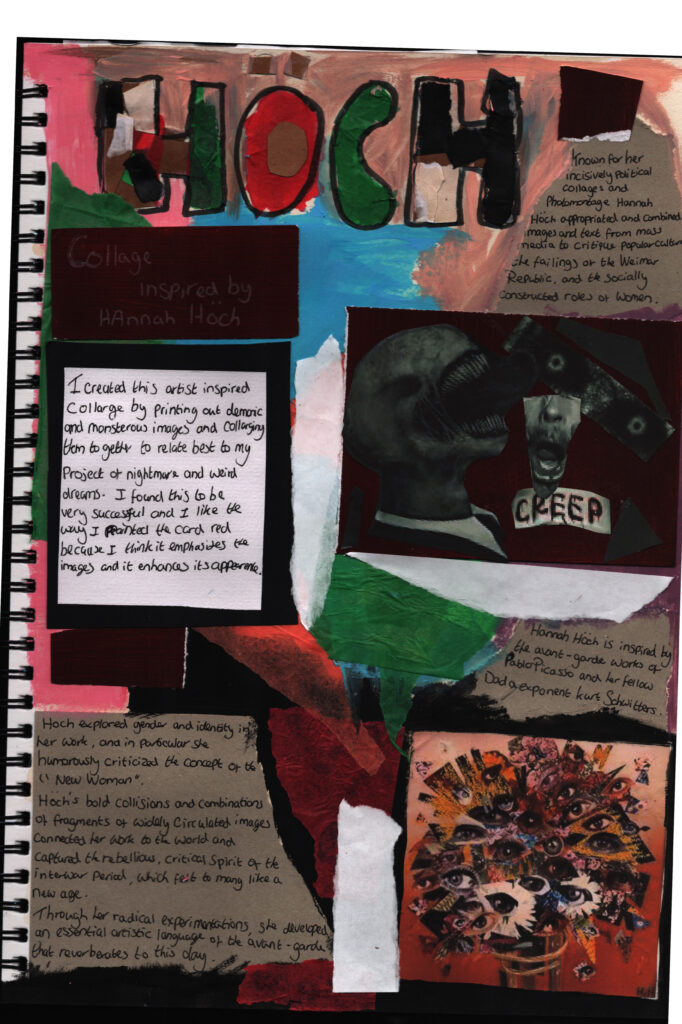
Batik
I also tested out batik. Although I did enjoy this creating this I don’t think I would do this again in this project because I want to go down the root of painting and drawing and this technique isn’t my specialist practice although I do like the design and the colour scheme I went for.
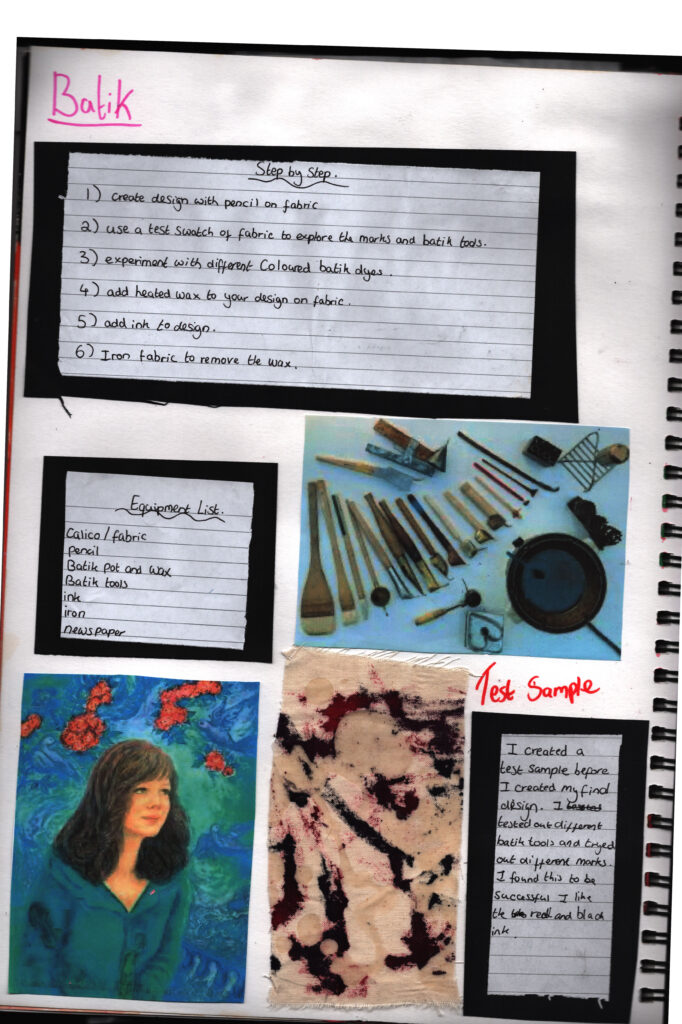
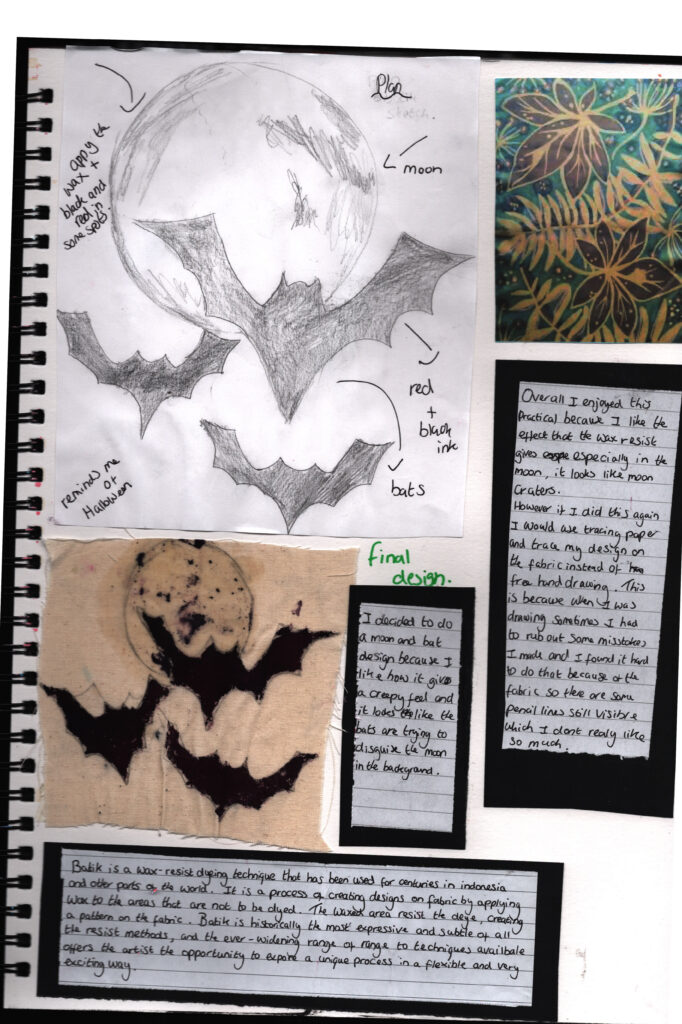
Secondary research “The Savage ” by David Almond illustrated by Dave Mekfan.
I found this research in a book called the “savage ” in the college library .
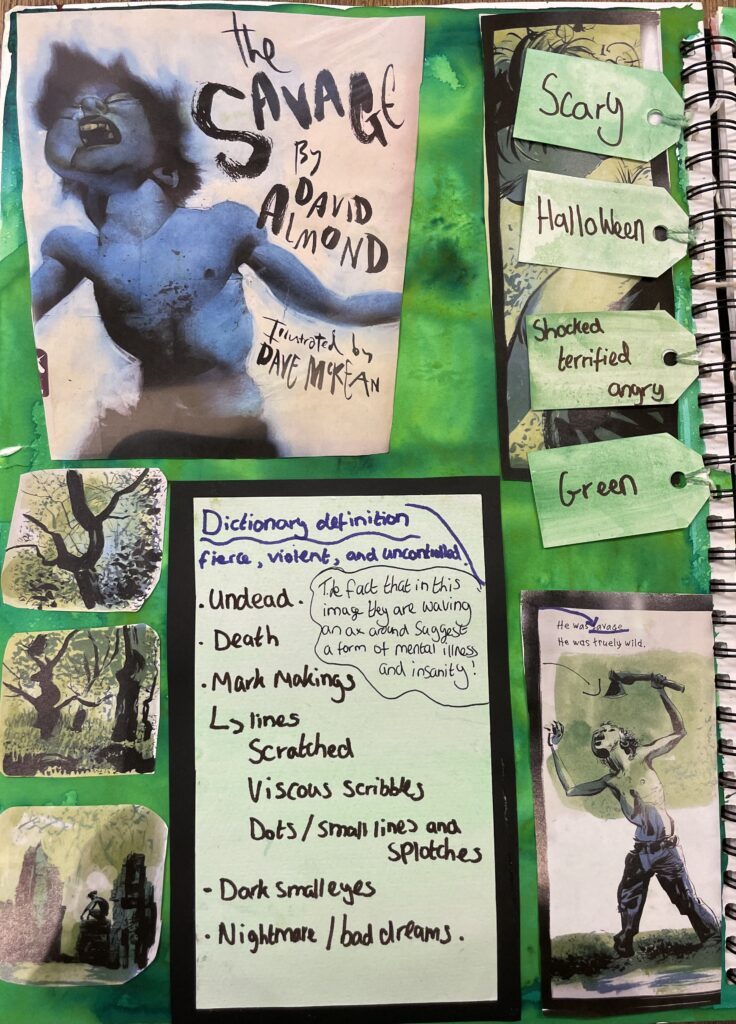
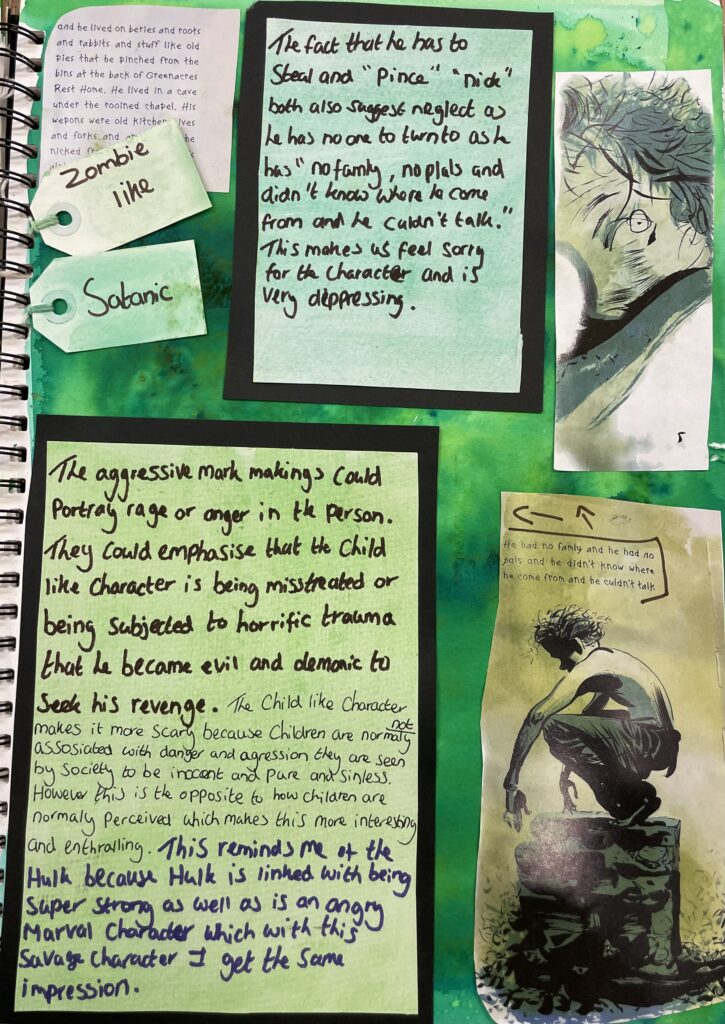
Zeines.
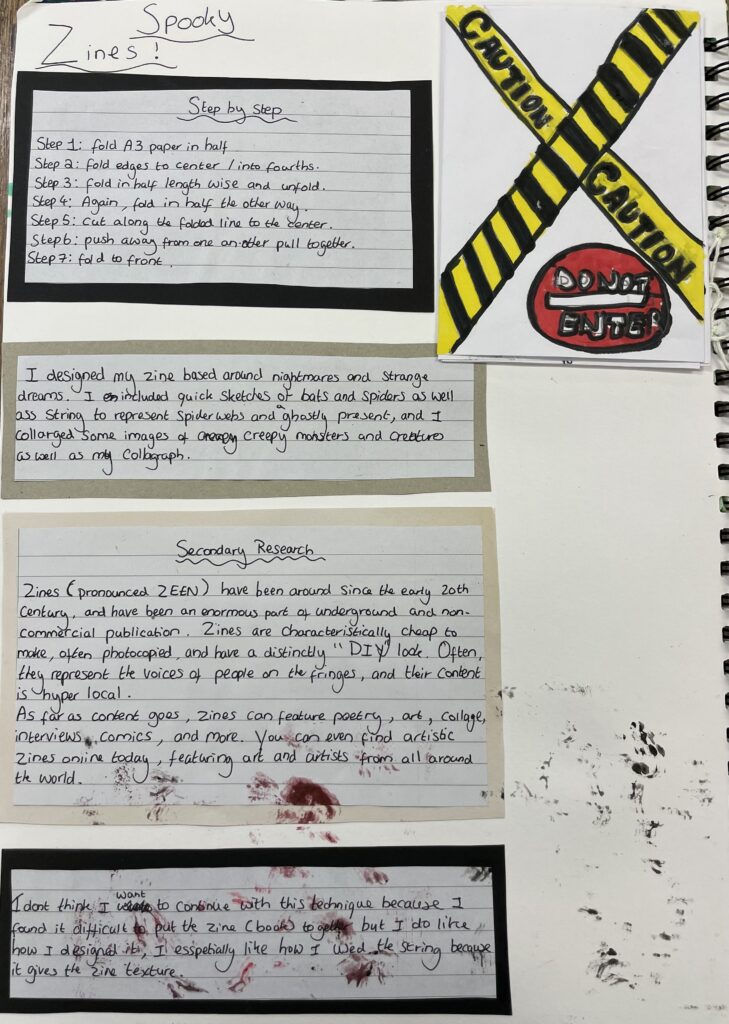
calligraphy
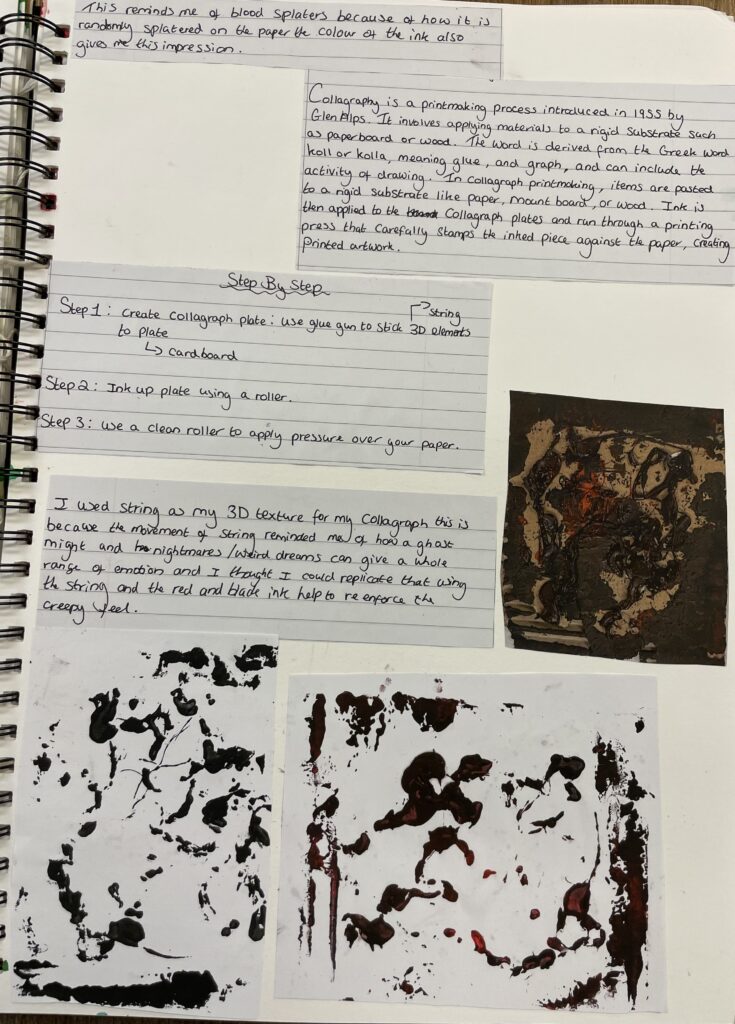
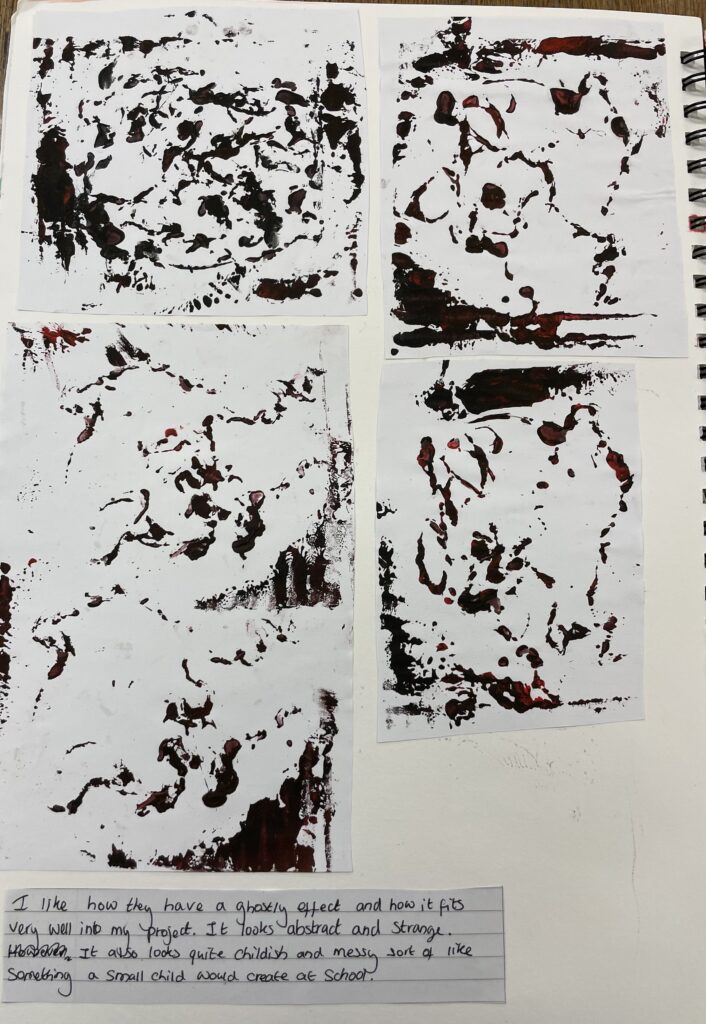
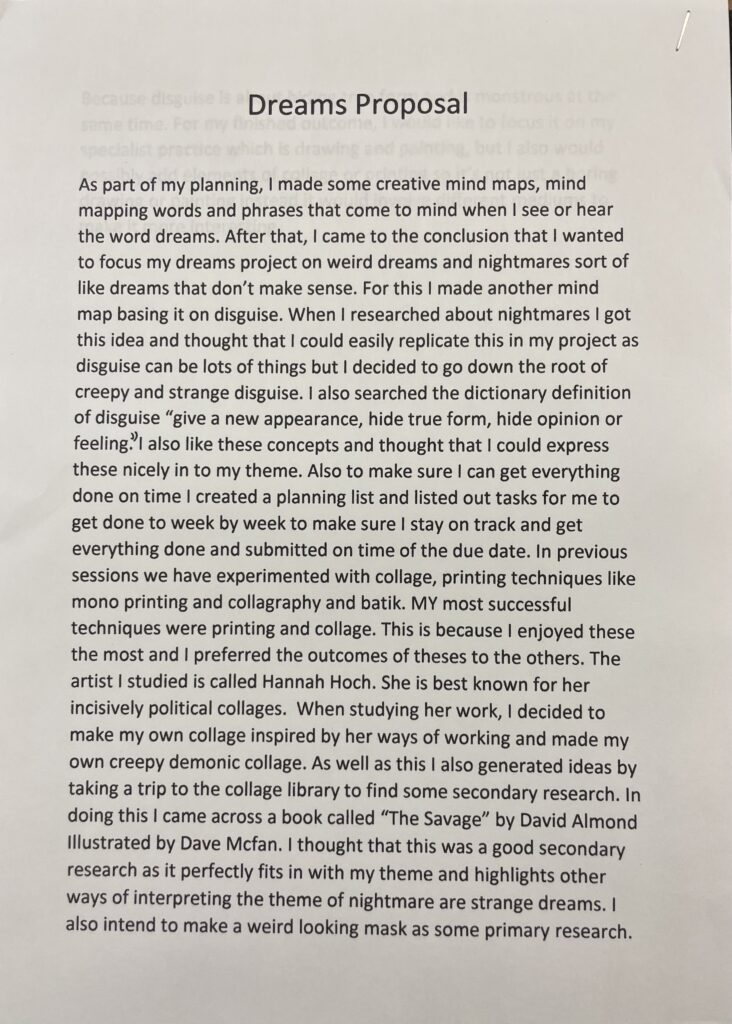
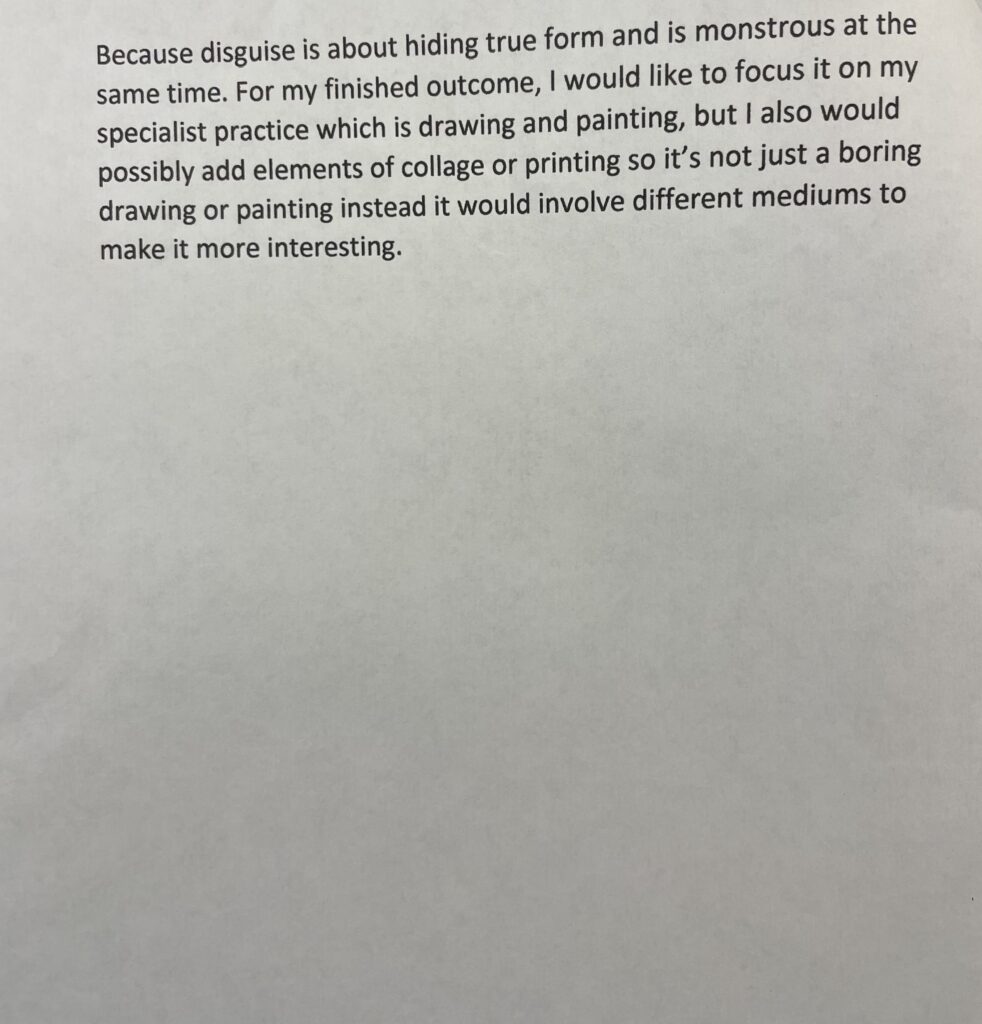
Dyslexia Awareness Week poster (work experience)
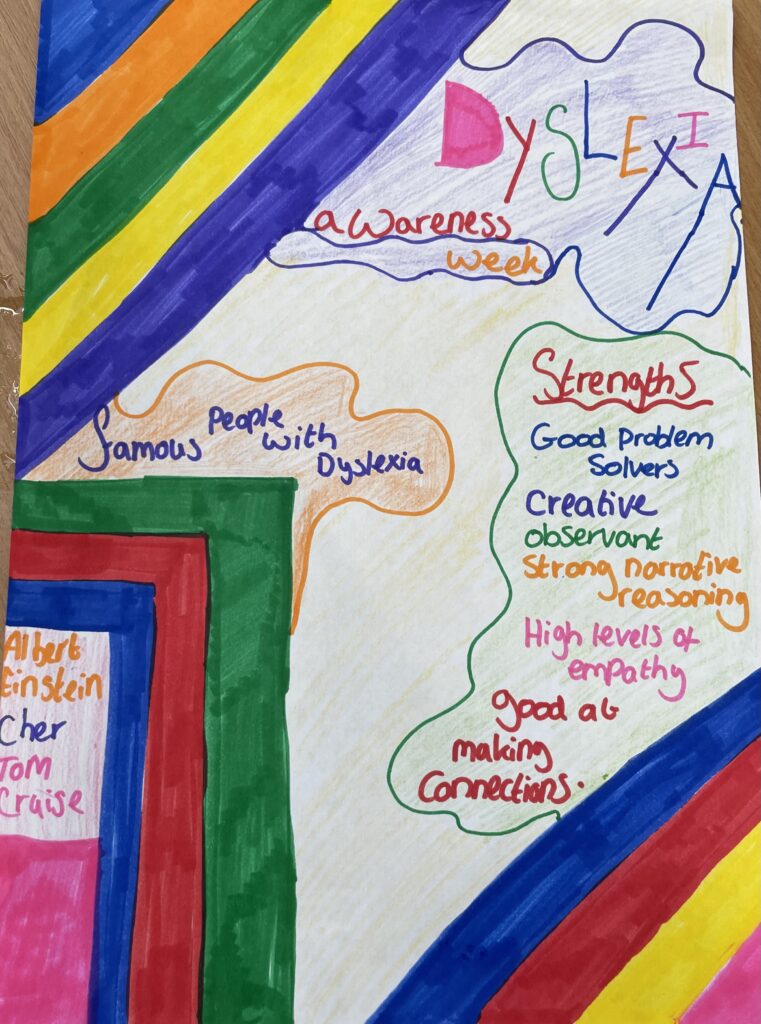
For this work experience I made a poster celebrating and raising awareness for people with dyslexia.
Sustainable art
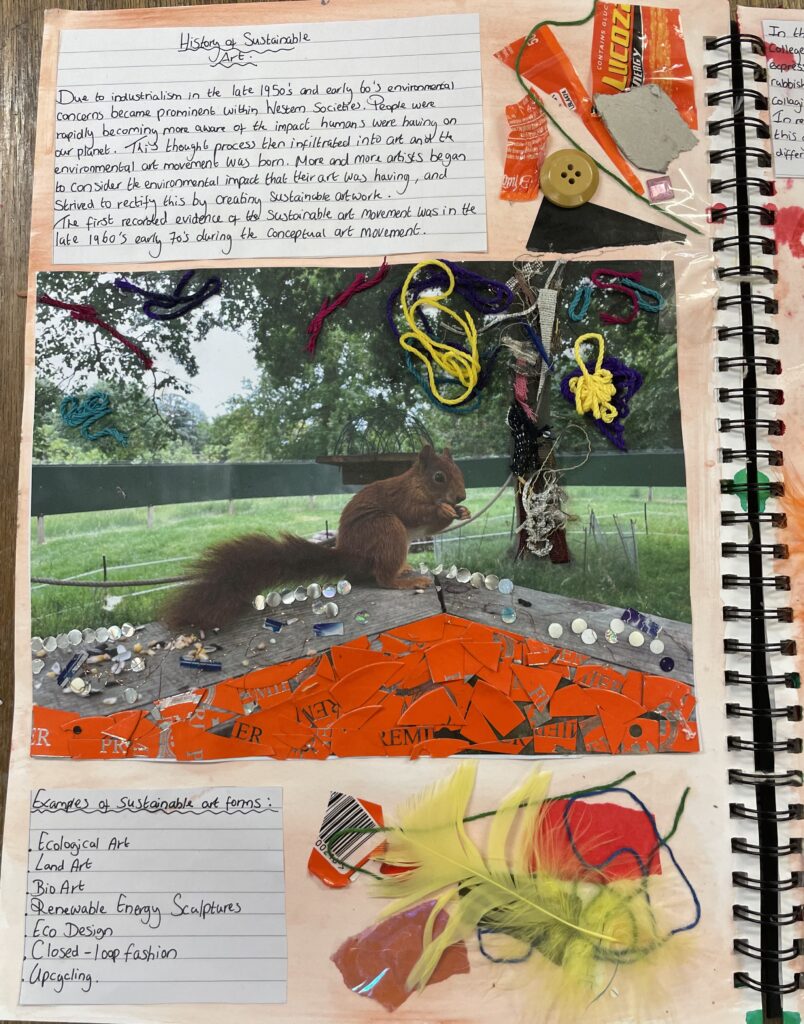
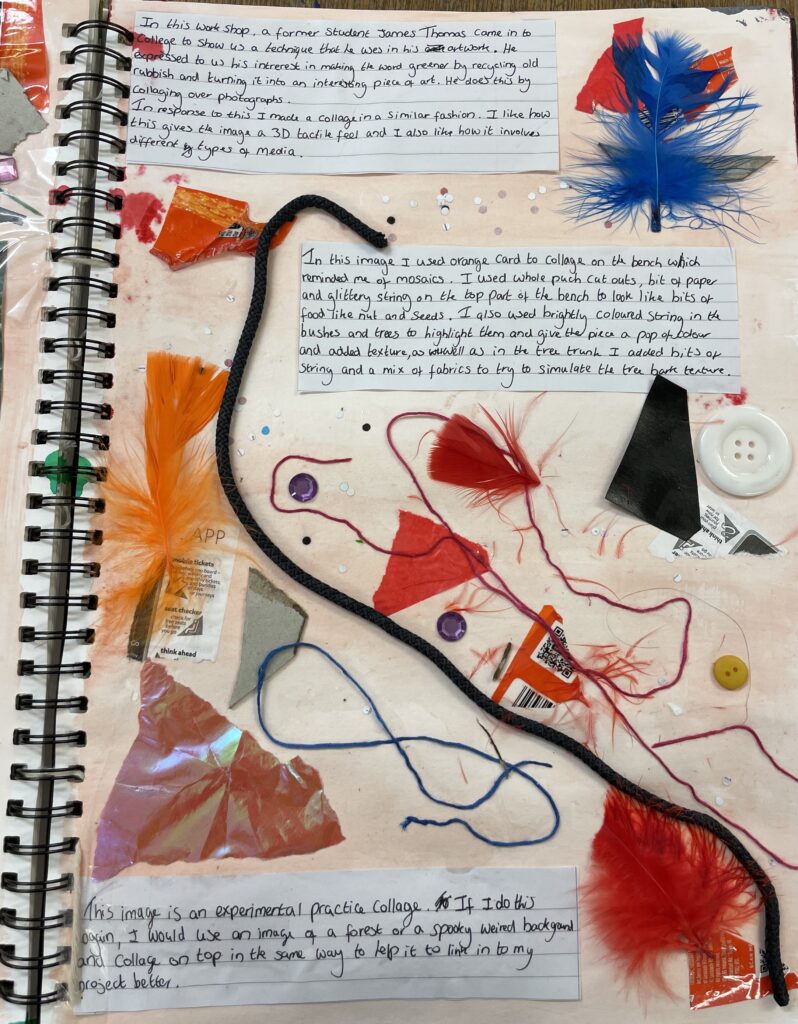
Mixed Media
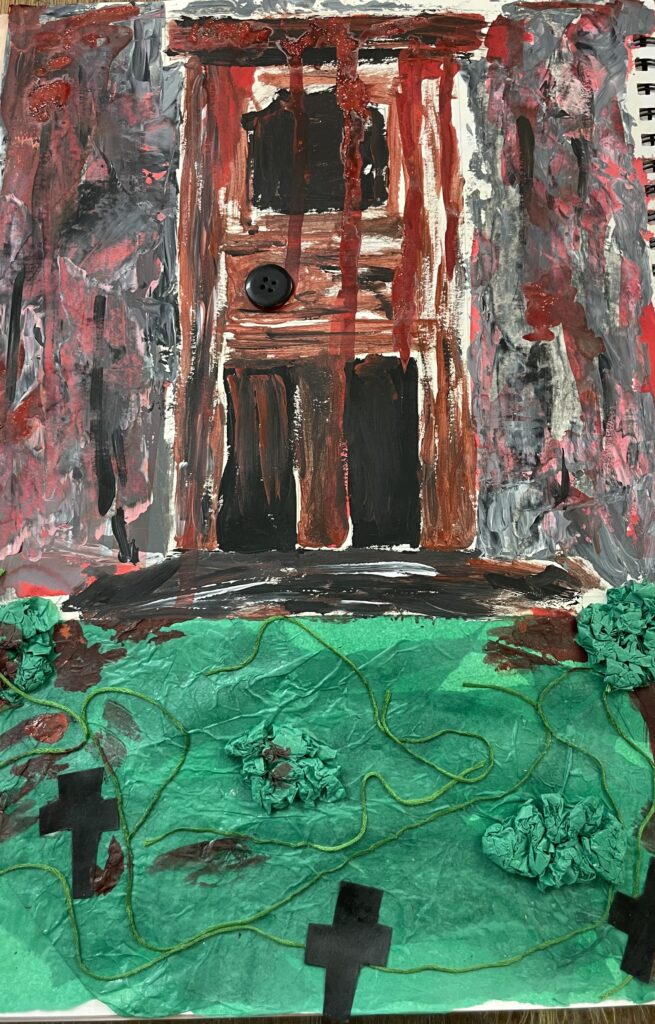
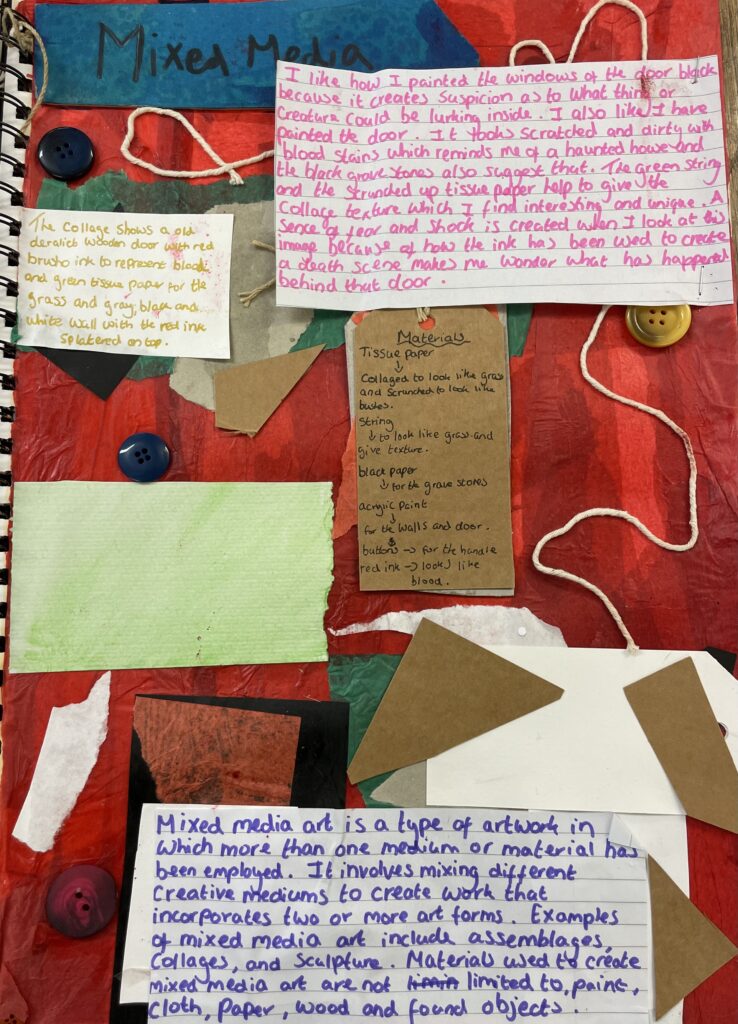
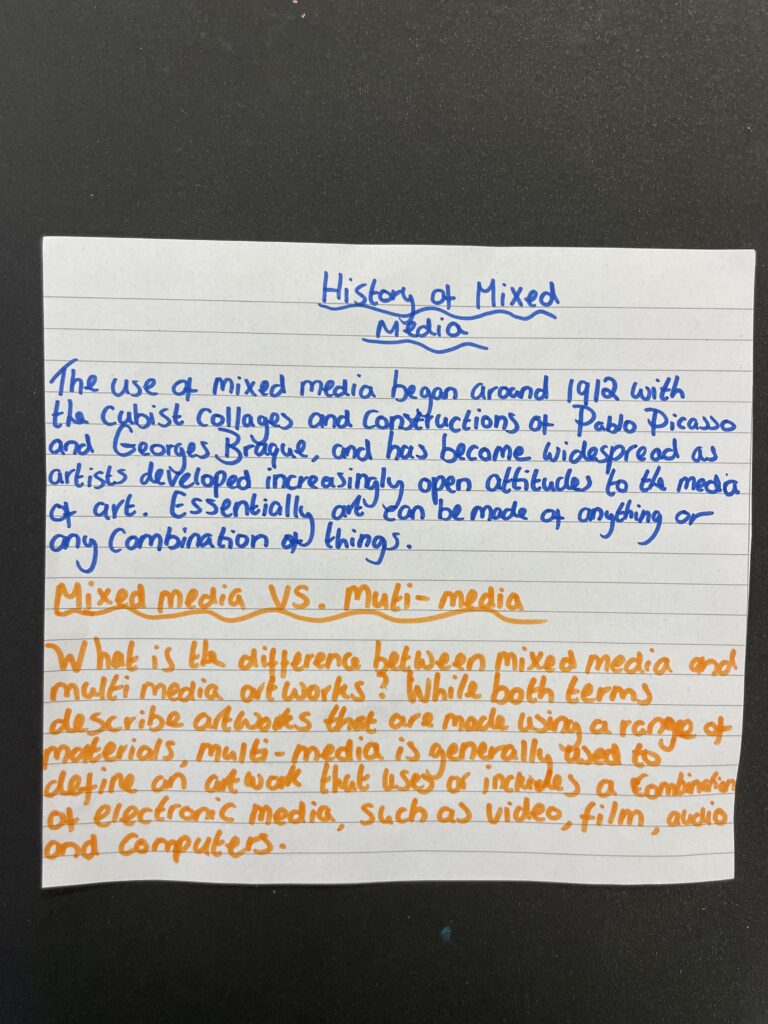
Generating Ideas Line Drawings.
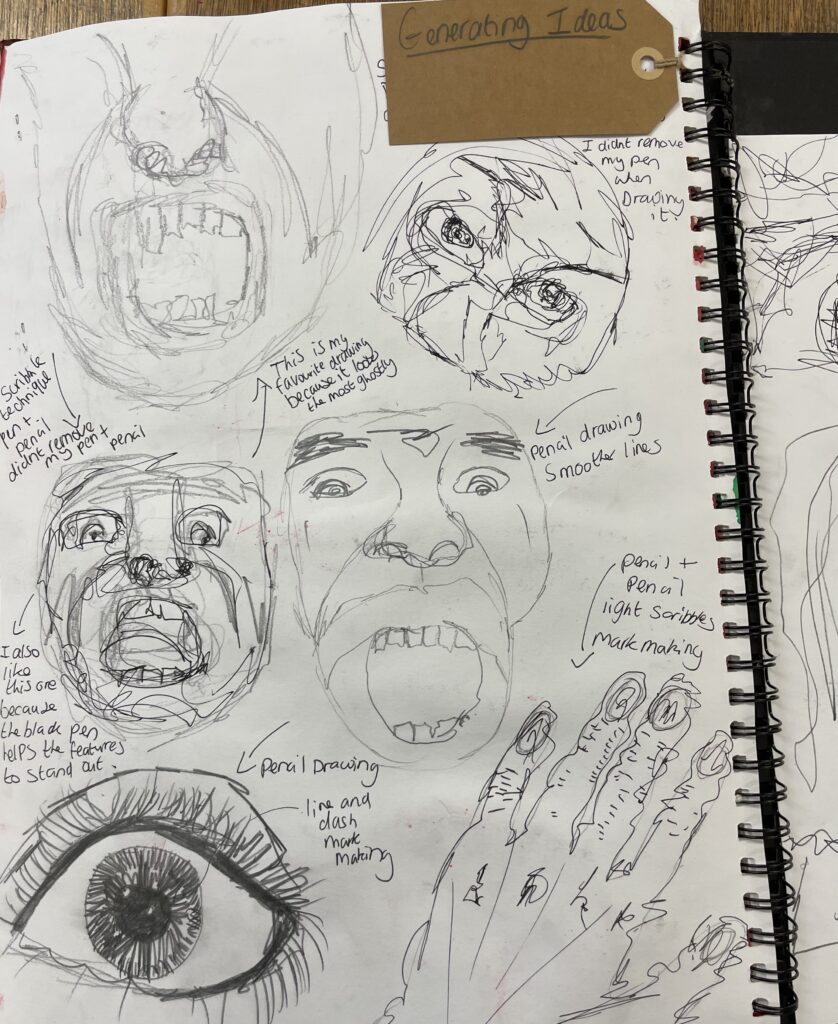
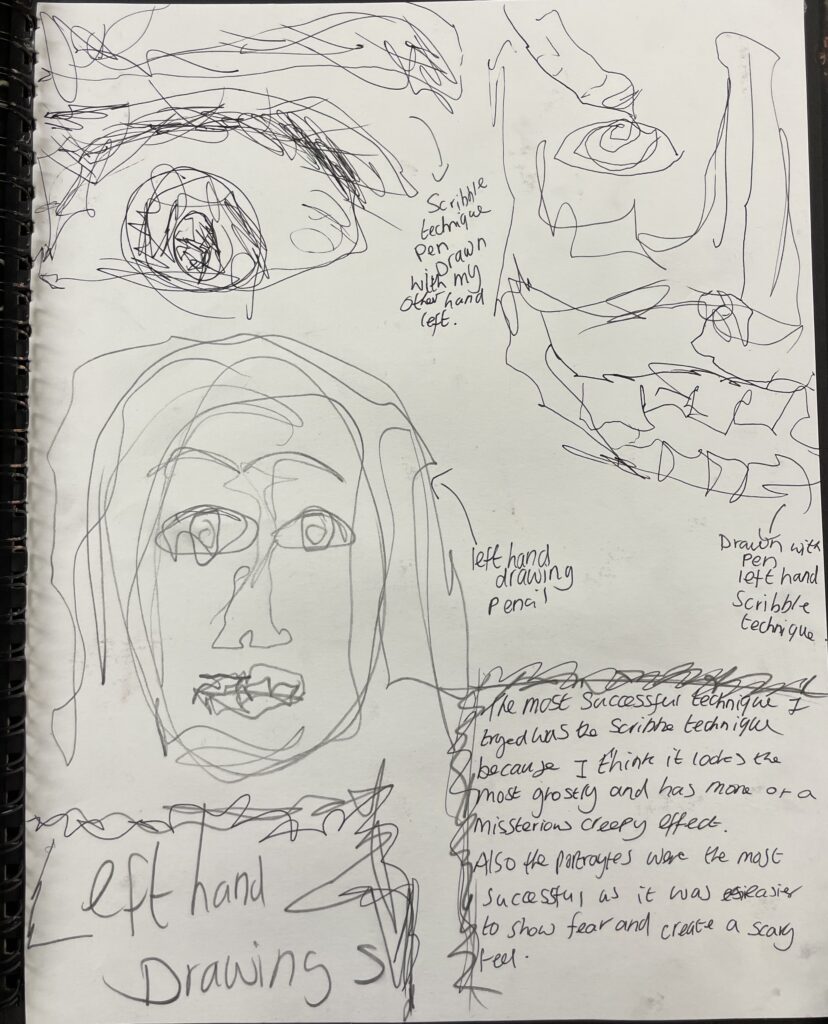
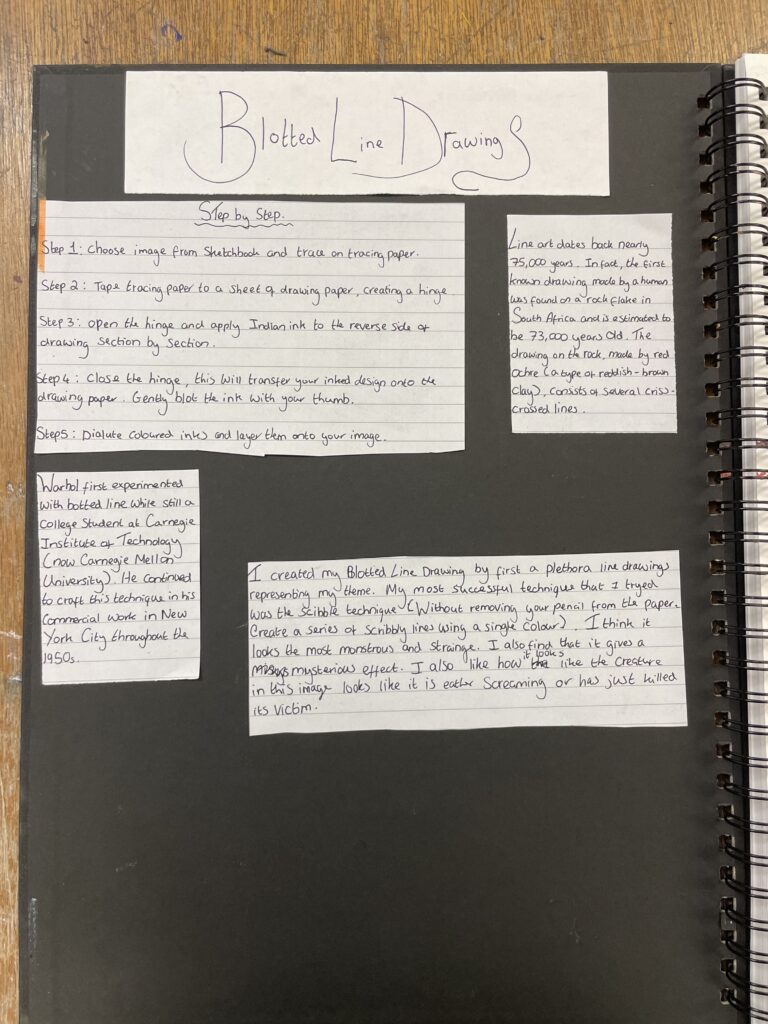
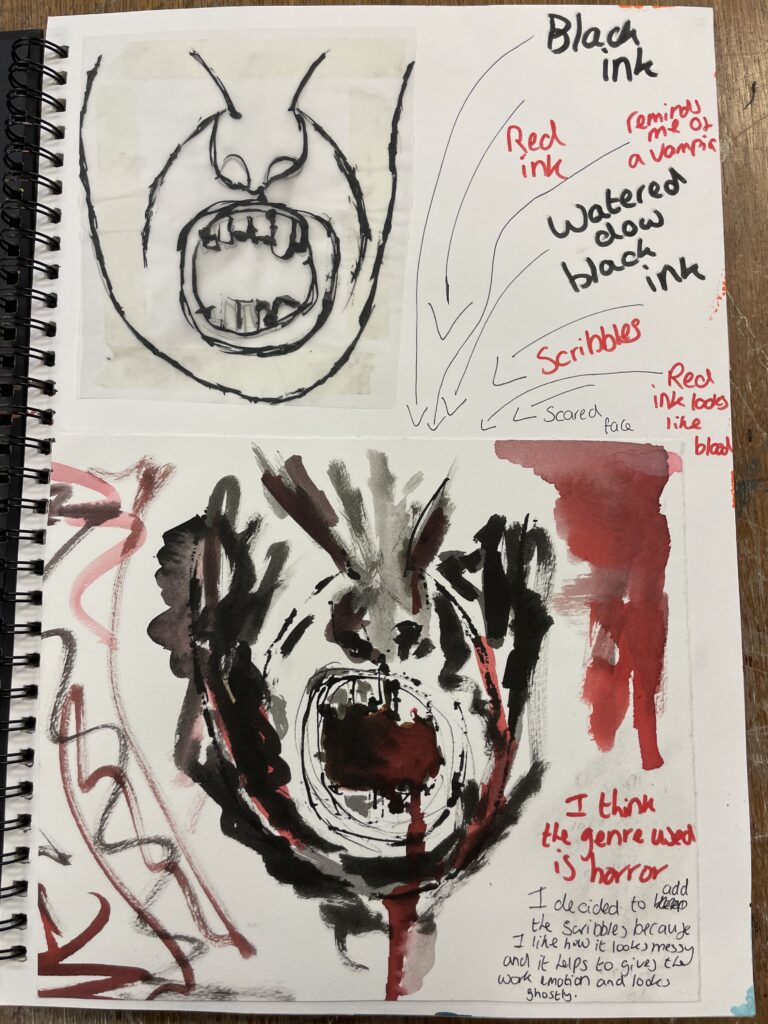
Artist Research( Stanley William Hayter)
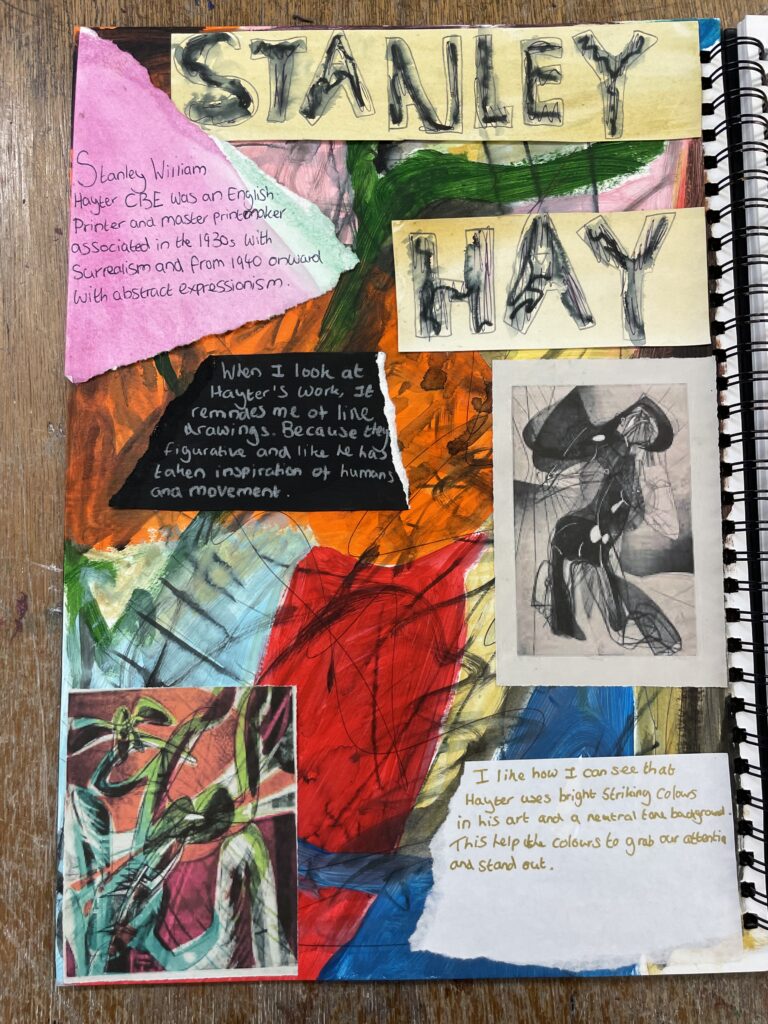
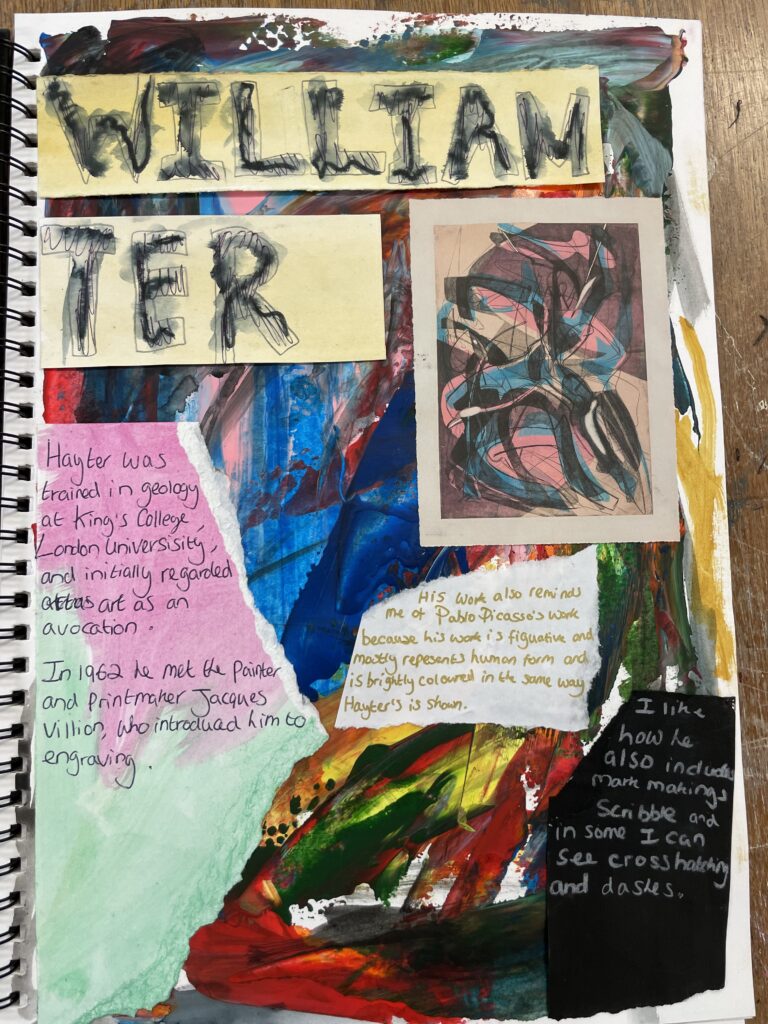
https://www.britannica.com/biography/Stanley-William-Hayter
Artist Research (Chris Ofili)
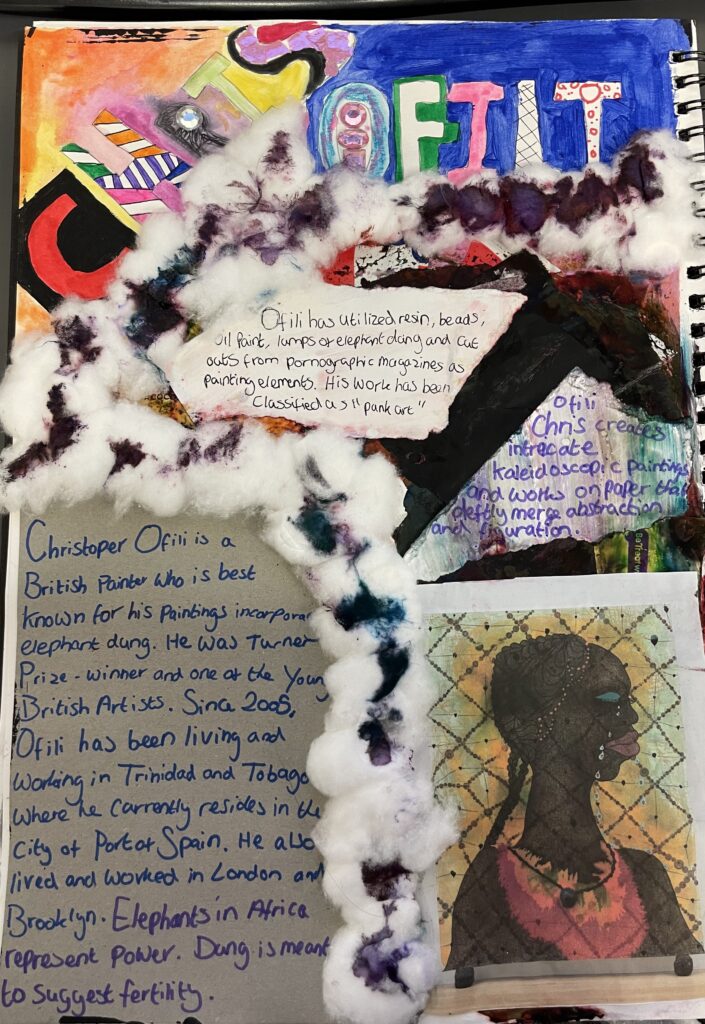
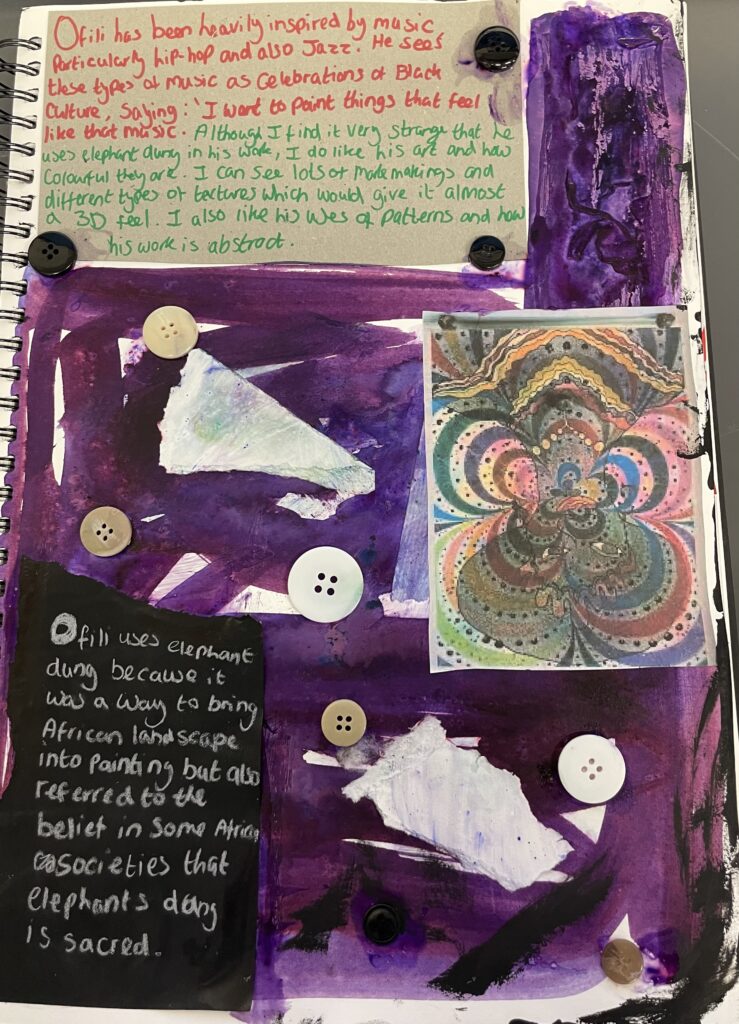
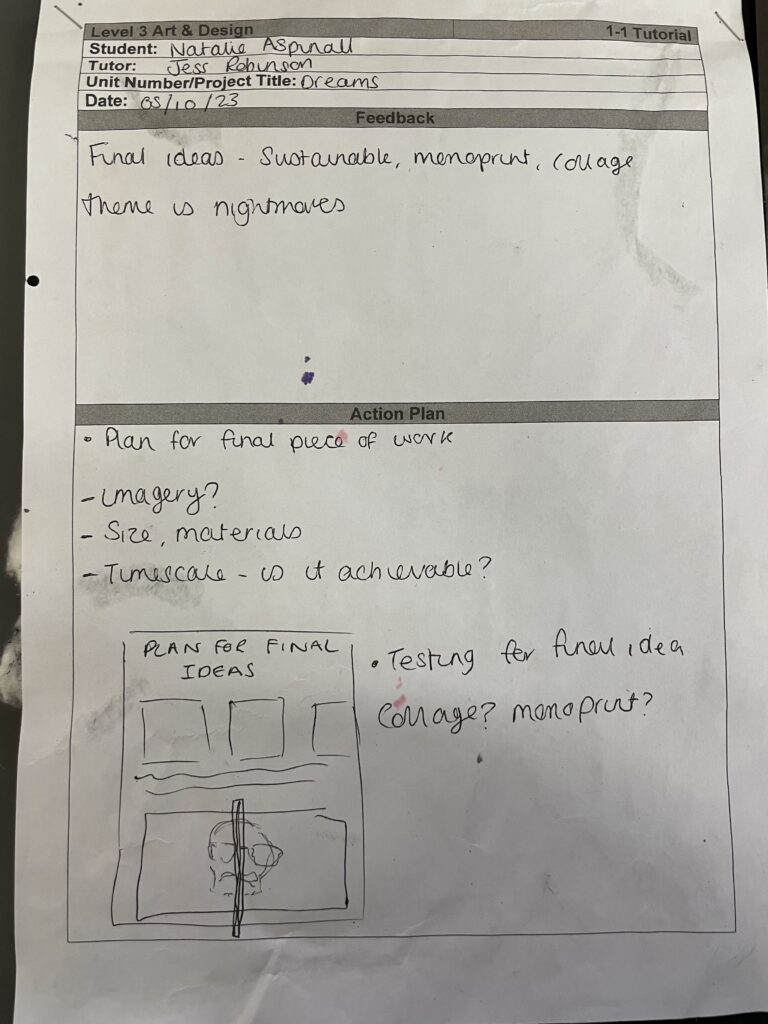
Final Ideas Skull Mood Board
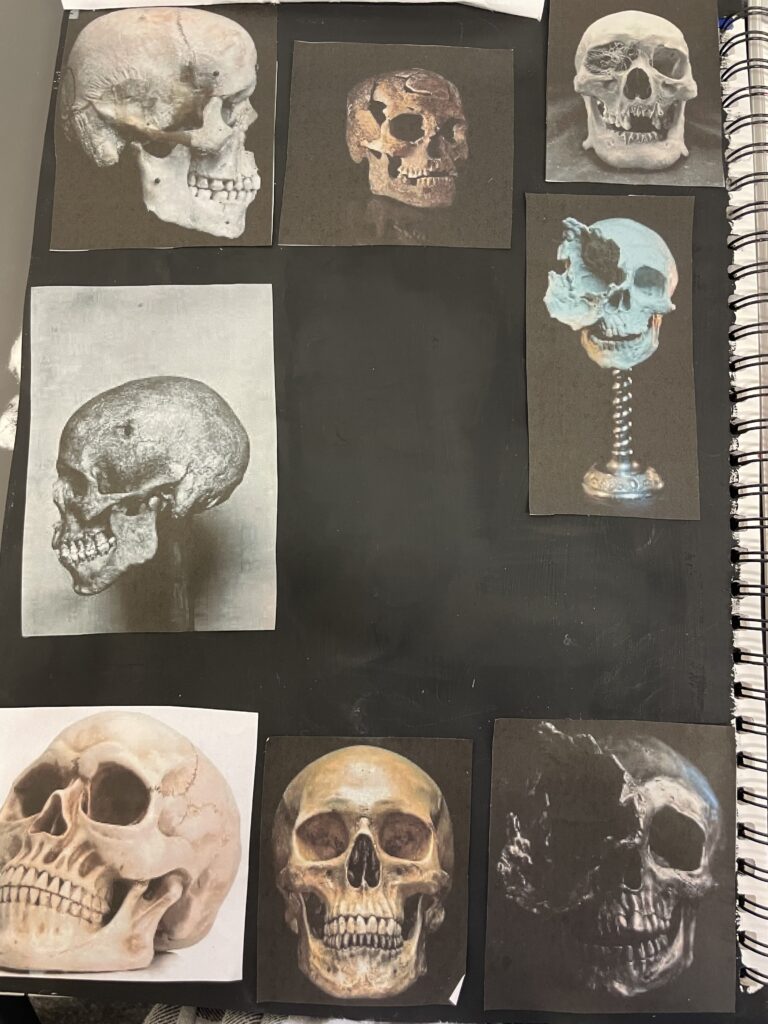
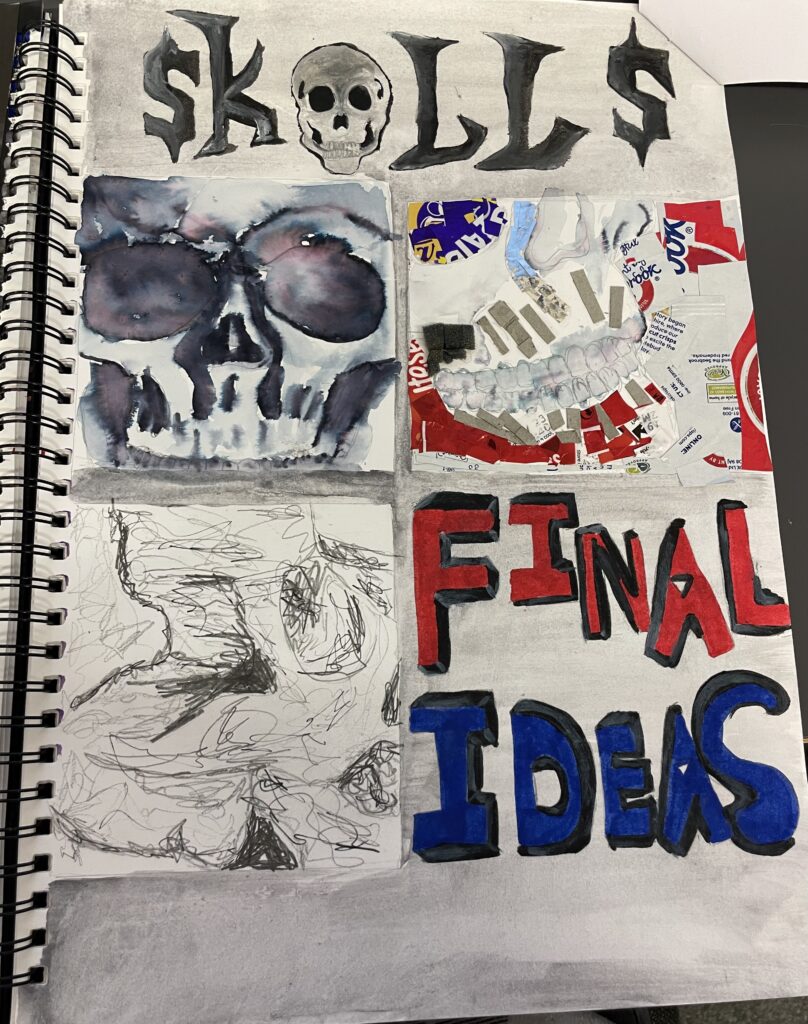
Idea 1 : ink wash painting
Ink Painting
Pen and water
Skull
Idea 2: collage and sustainable
reminds me of mix media
card board
foam
sweet wrappers
crisp packets
pen and water ink painting
I also collected rubbish from my house and recycled it in my work.
Idea 3: Scribble mark making skull
pencil and pen
reminds me of line drawings
I used scribble because it was my most successful technique to use for line drawings.
The most successful image is the ink painting because I like the outcome , It was the easy to do and I think its the most effective as well as painting being one of my best practices. I like how the ink bleeds with the water creating a patches of light and dark which gives it layers . also I can clearly see the features and easily tell that it is a skull . It also has a water colour effect.
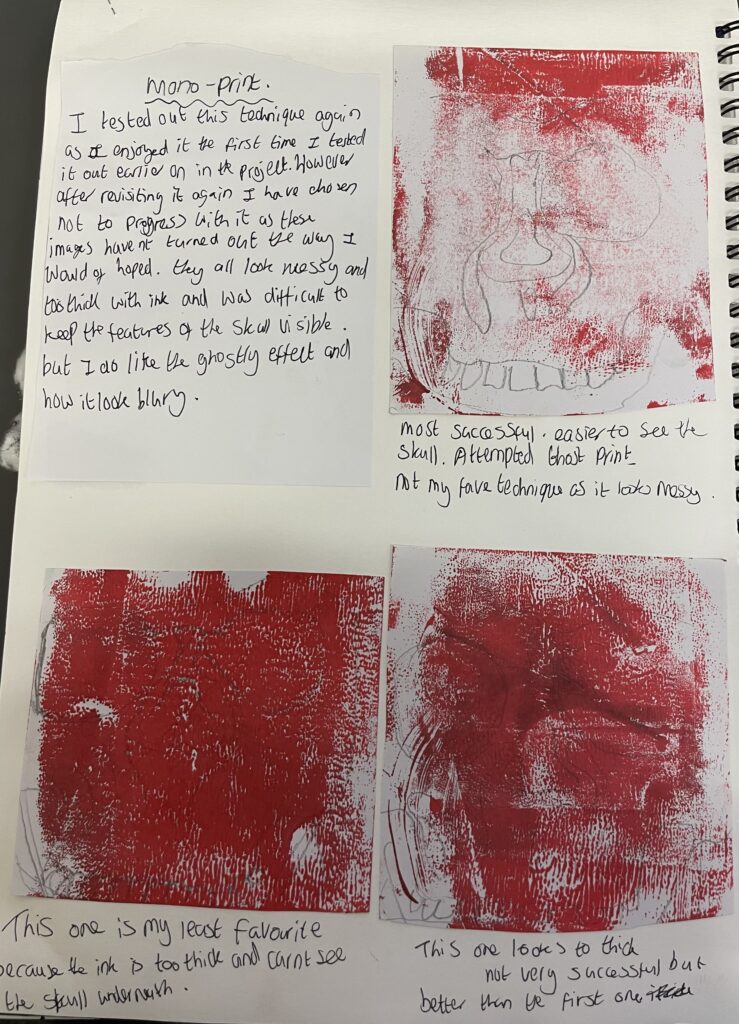
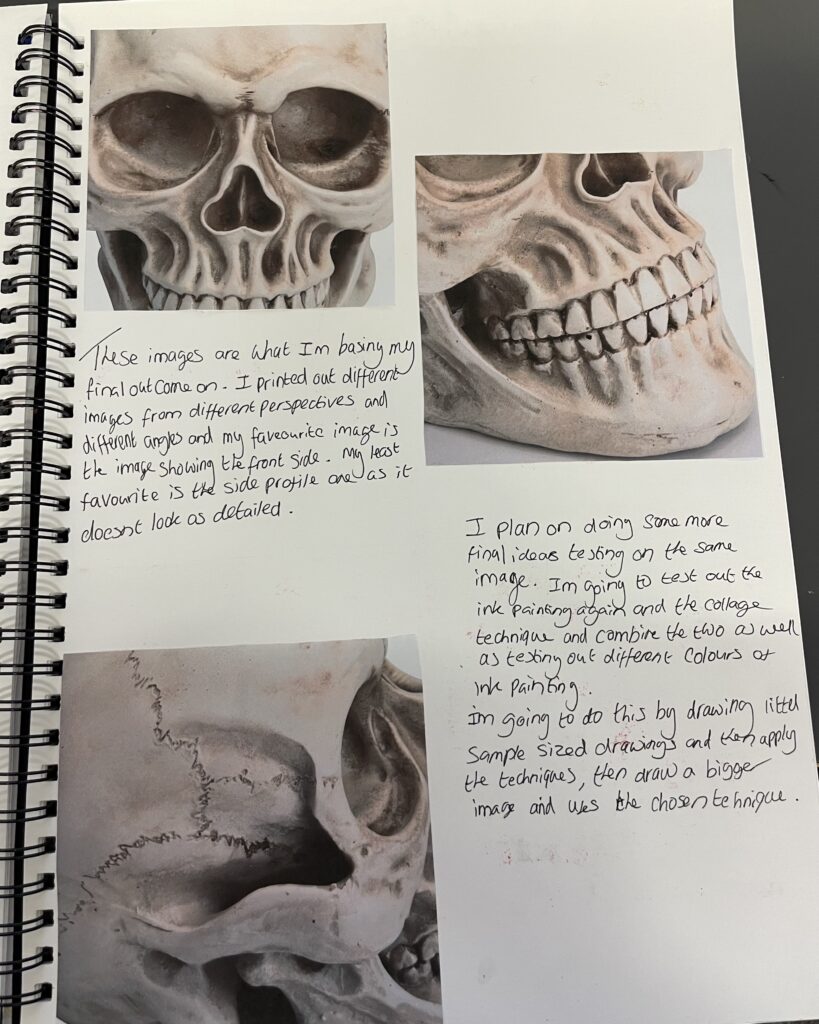
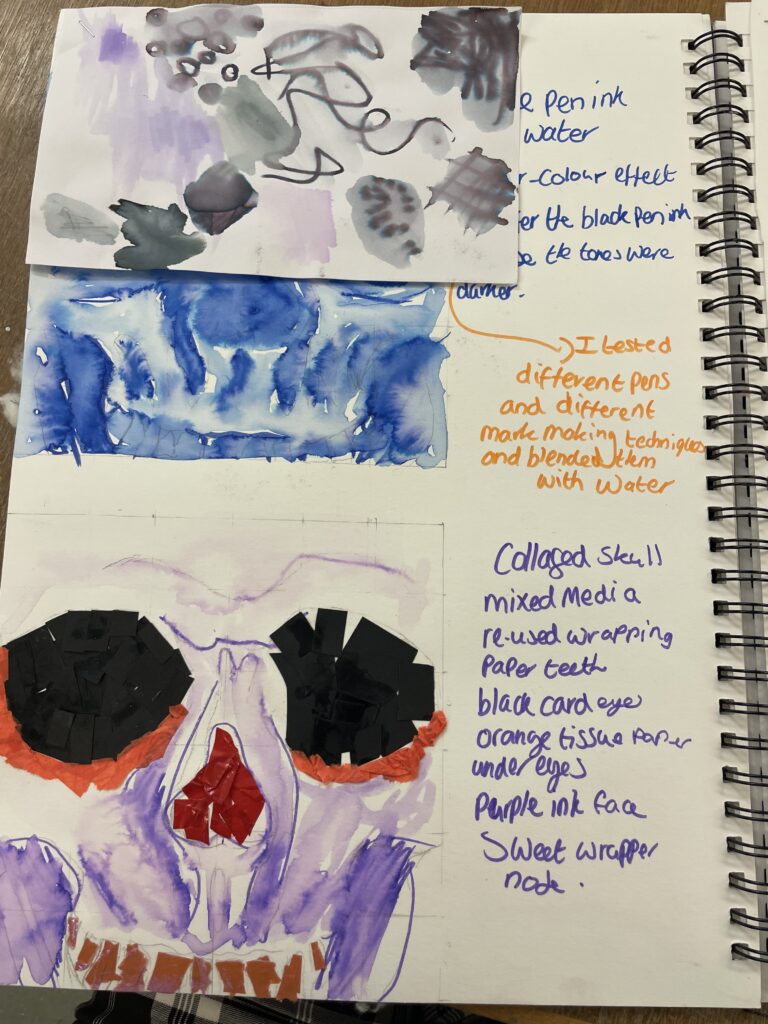
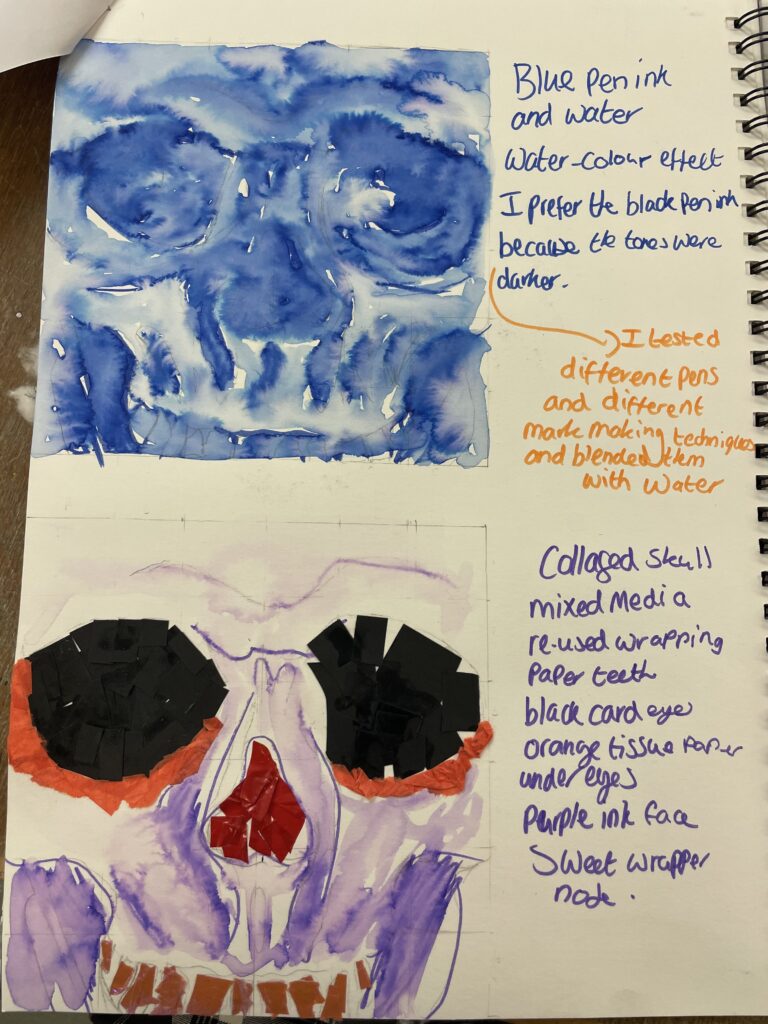
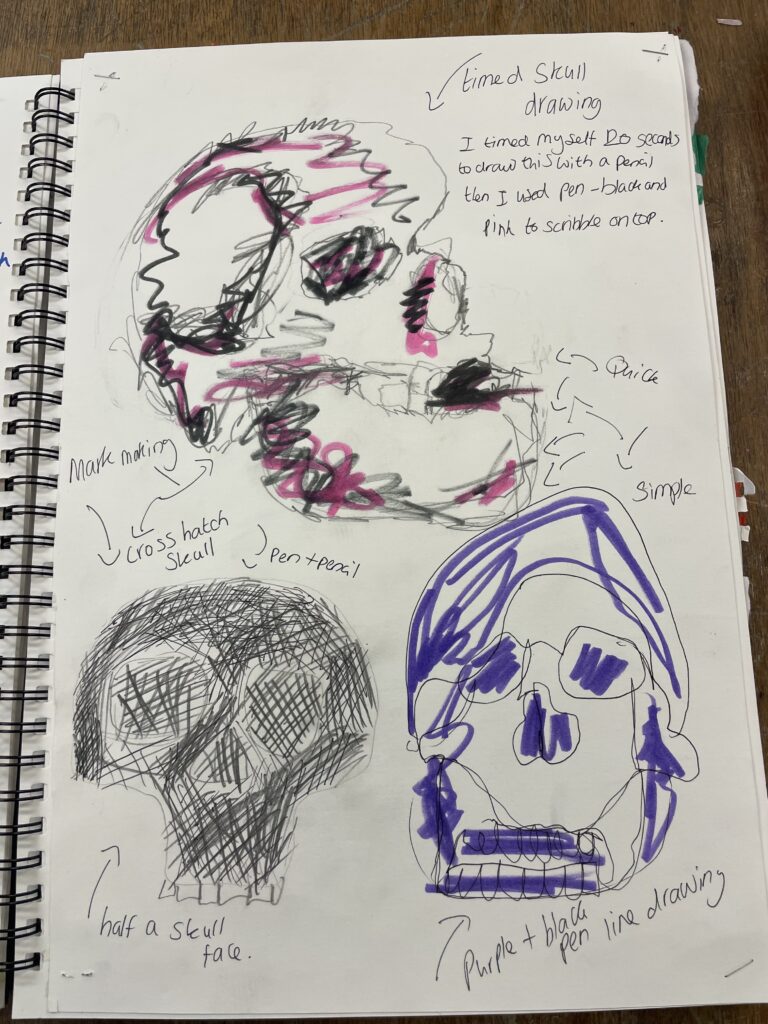
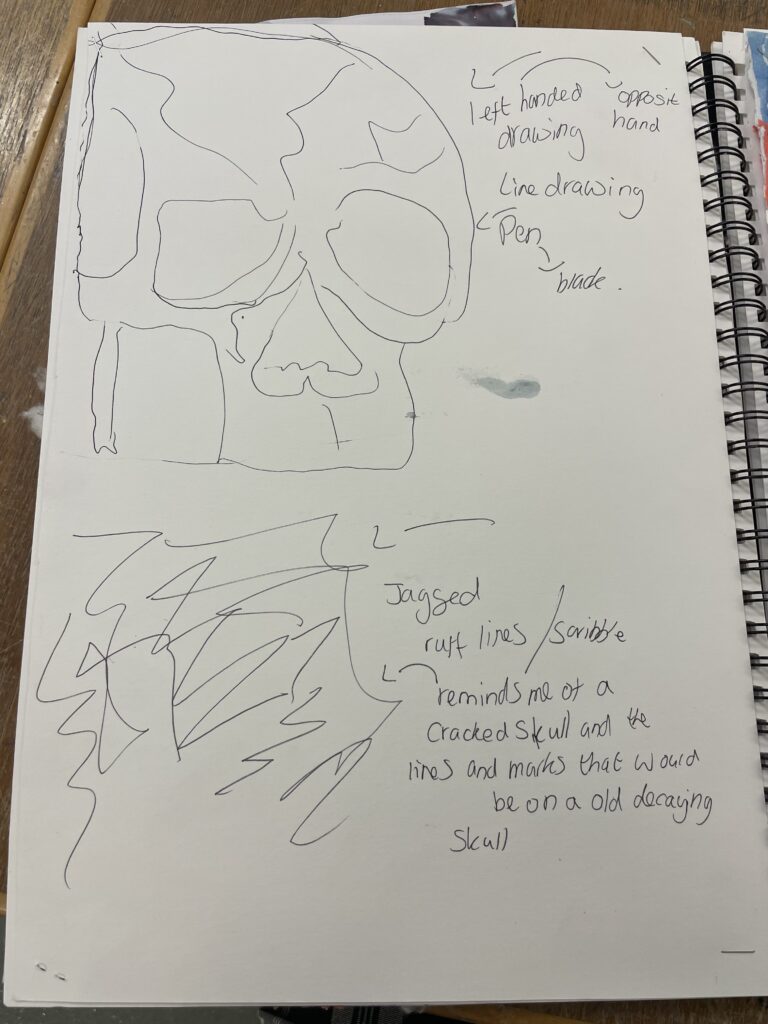
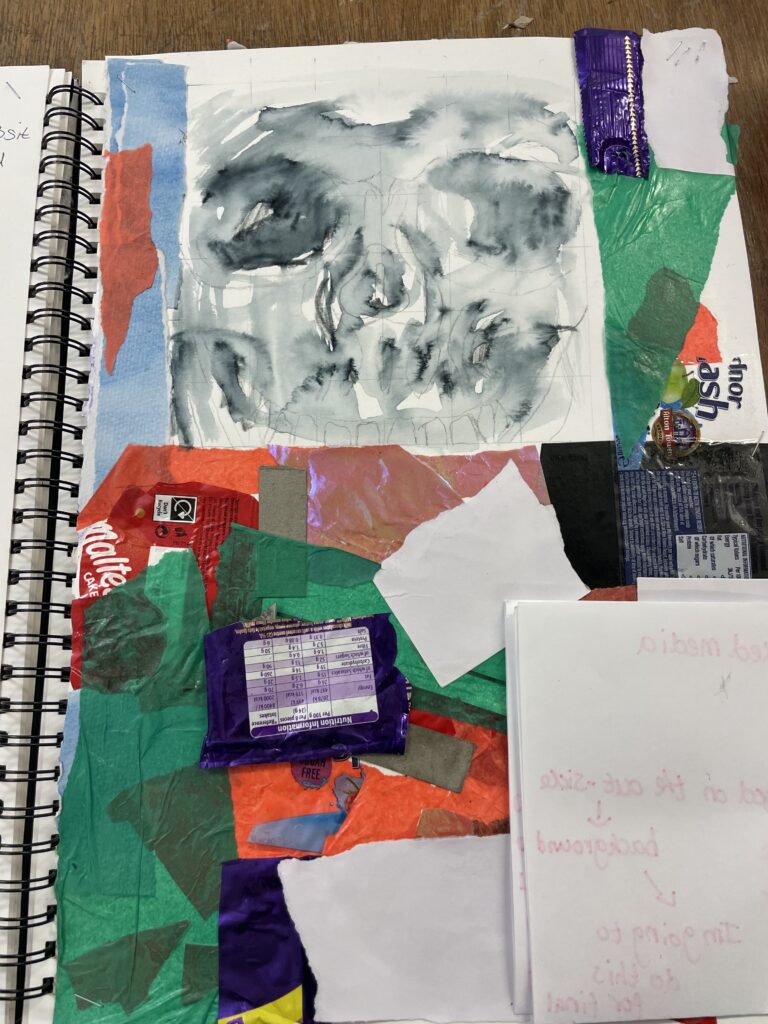
collaged and mixed media
sustainable
I like how I collaged the background
skull face
black pen and water
for my final piece I want to make the face more central on the page as I want it to be the point of focus.
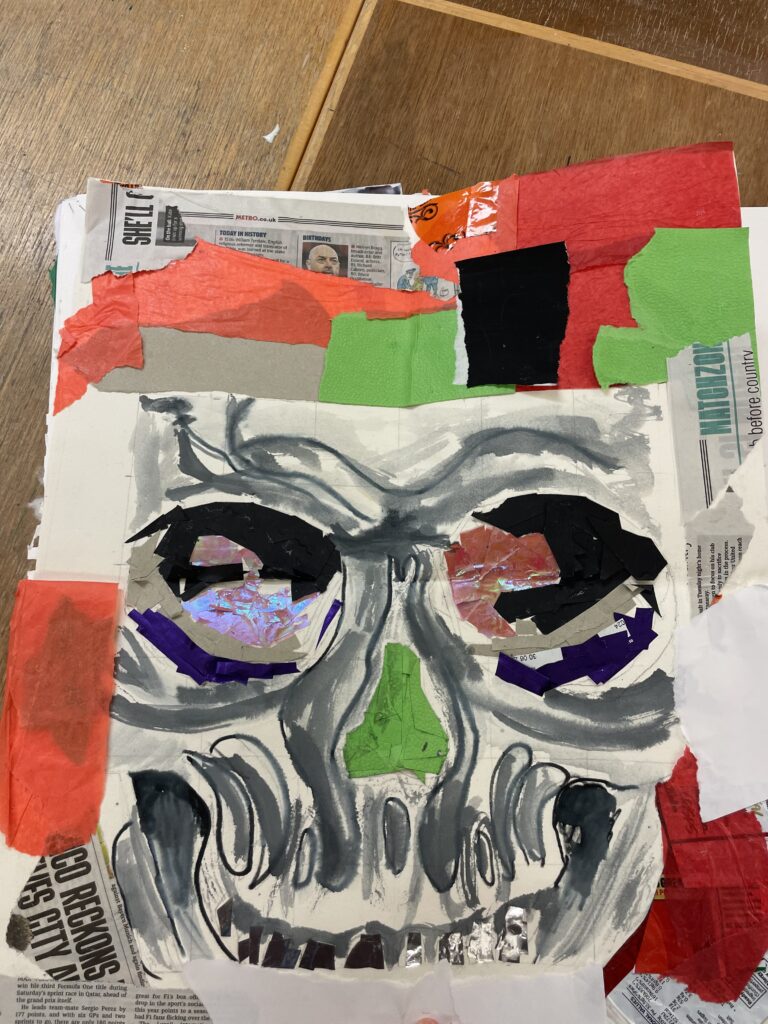
mixed media and college
sustainable
this is my favourite final outcome idea. I like how I collaged into it and in the background. I also like how I used ink in the face as well.I’m going to re create this on a bigger scale for my final piece A2/A1 paper.
Final outcome
